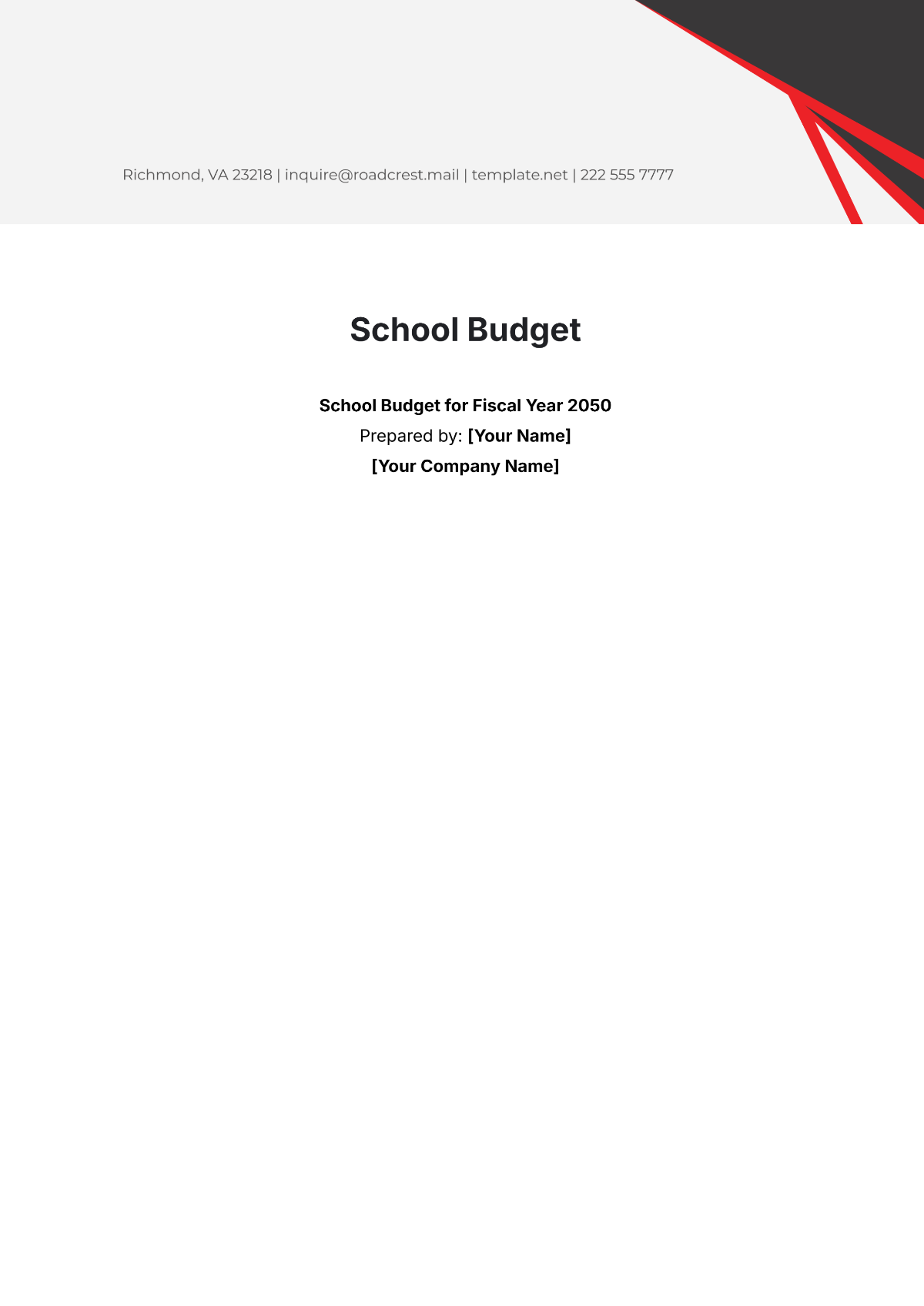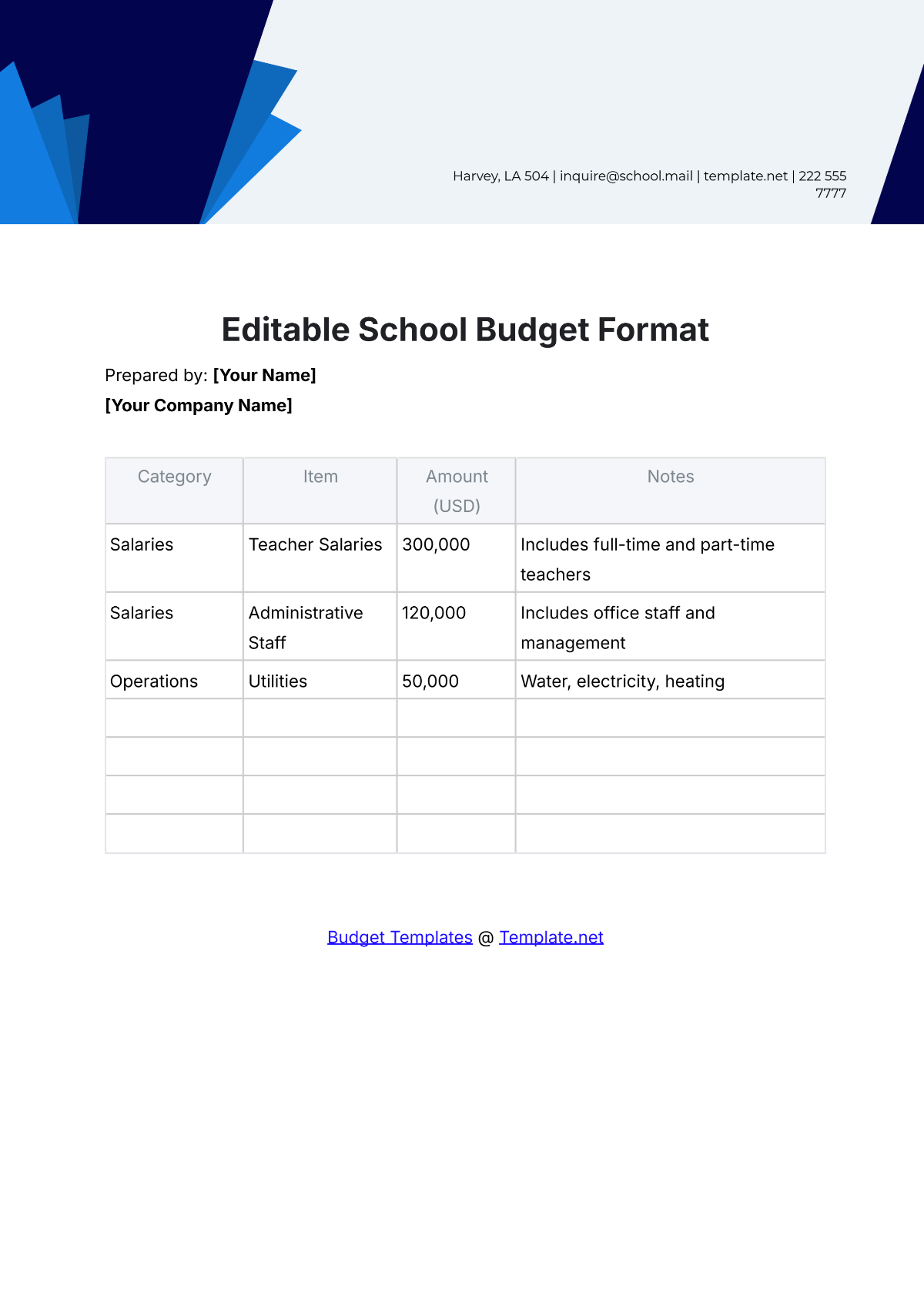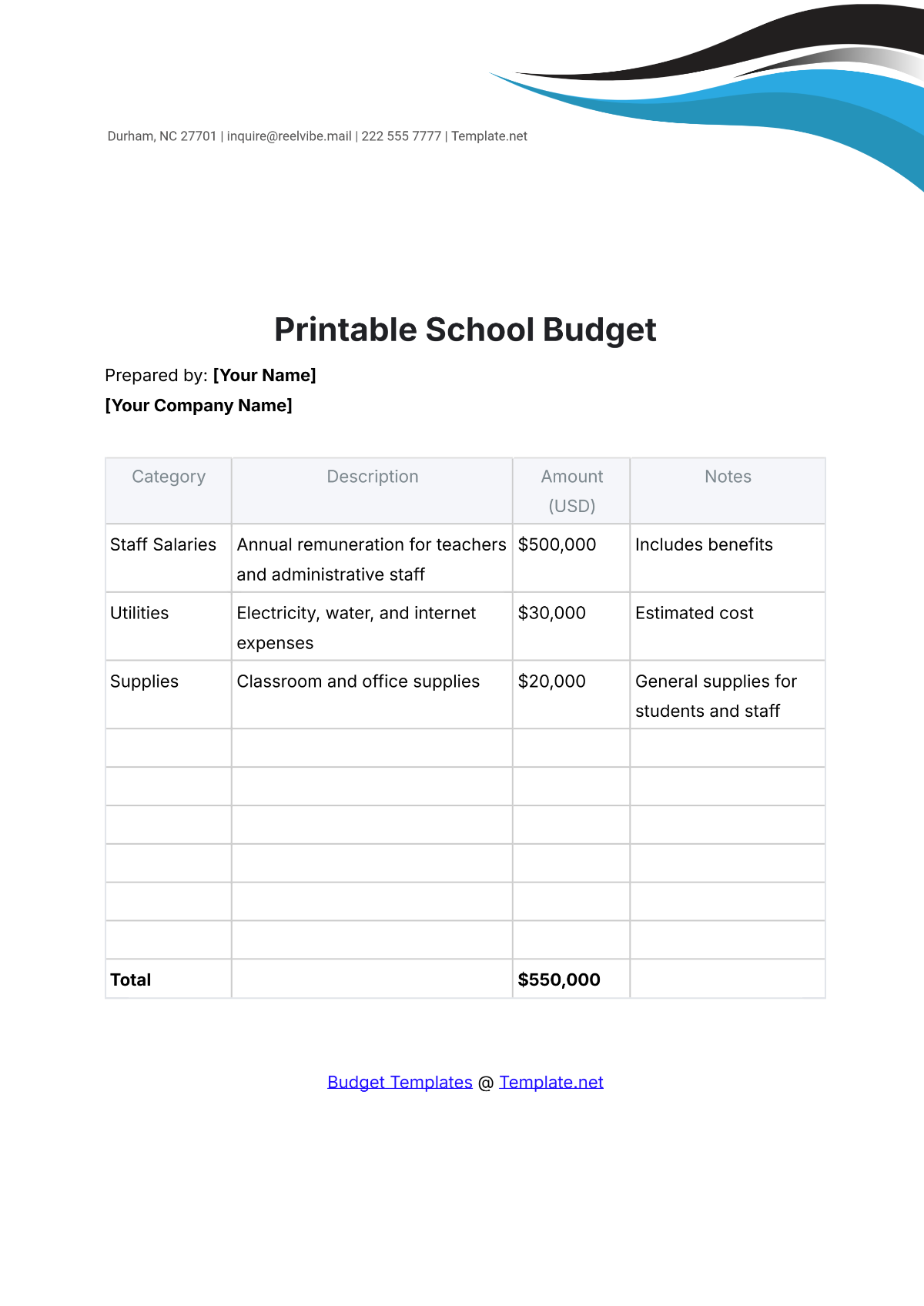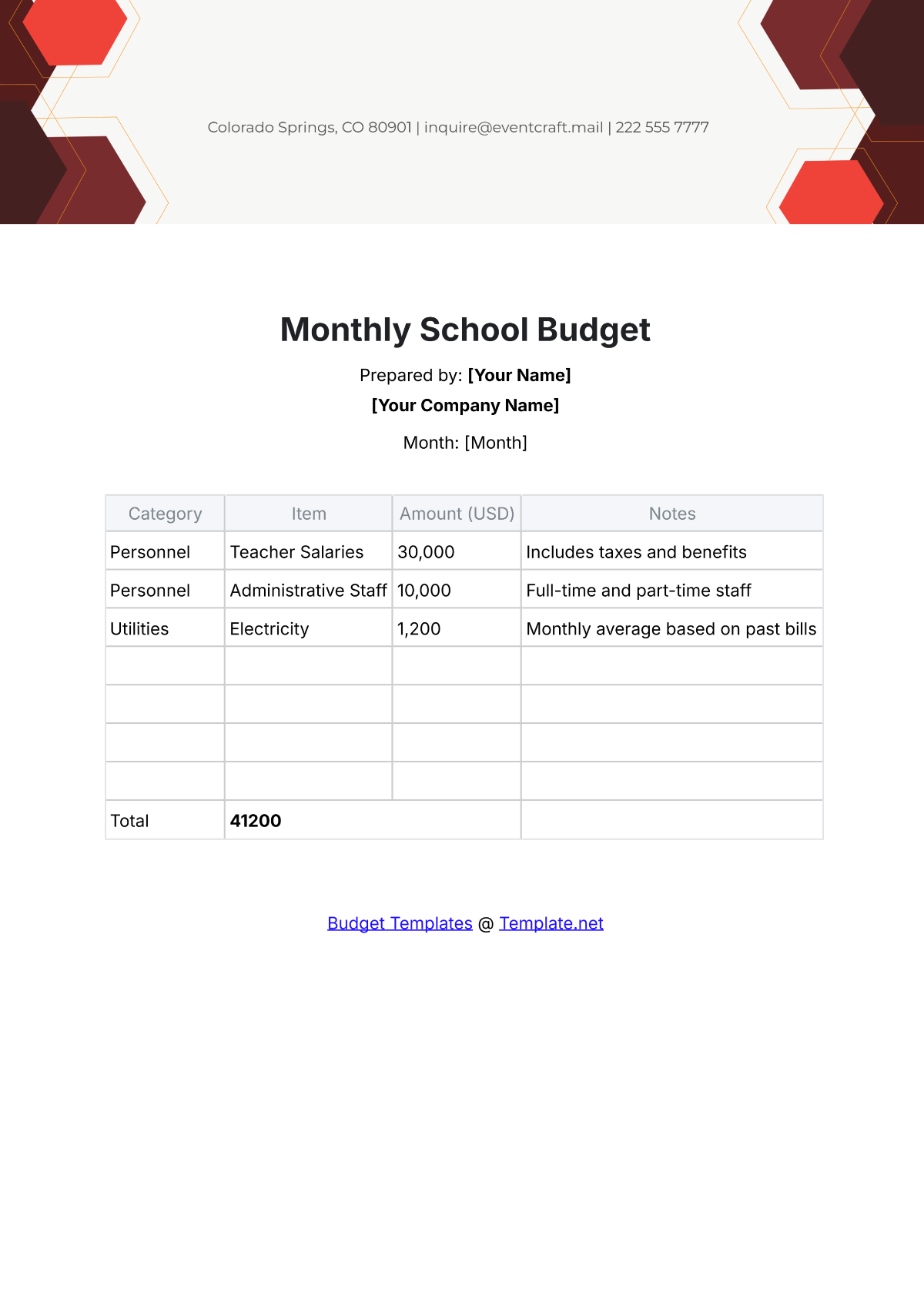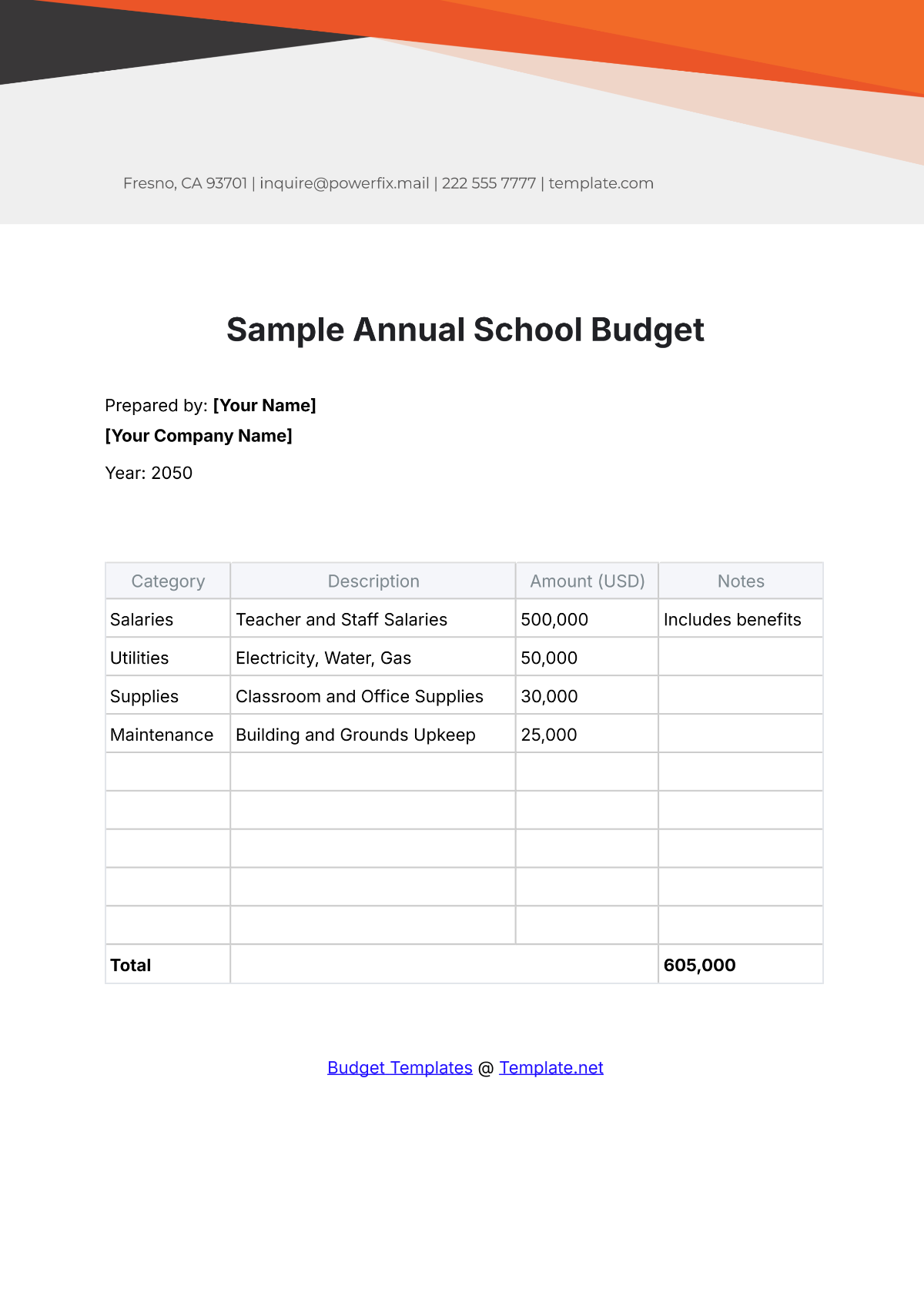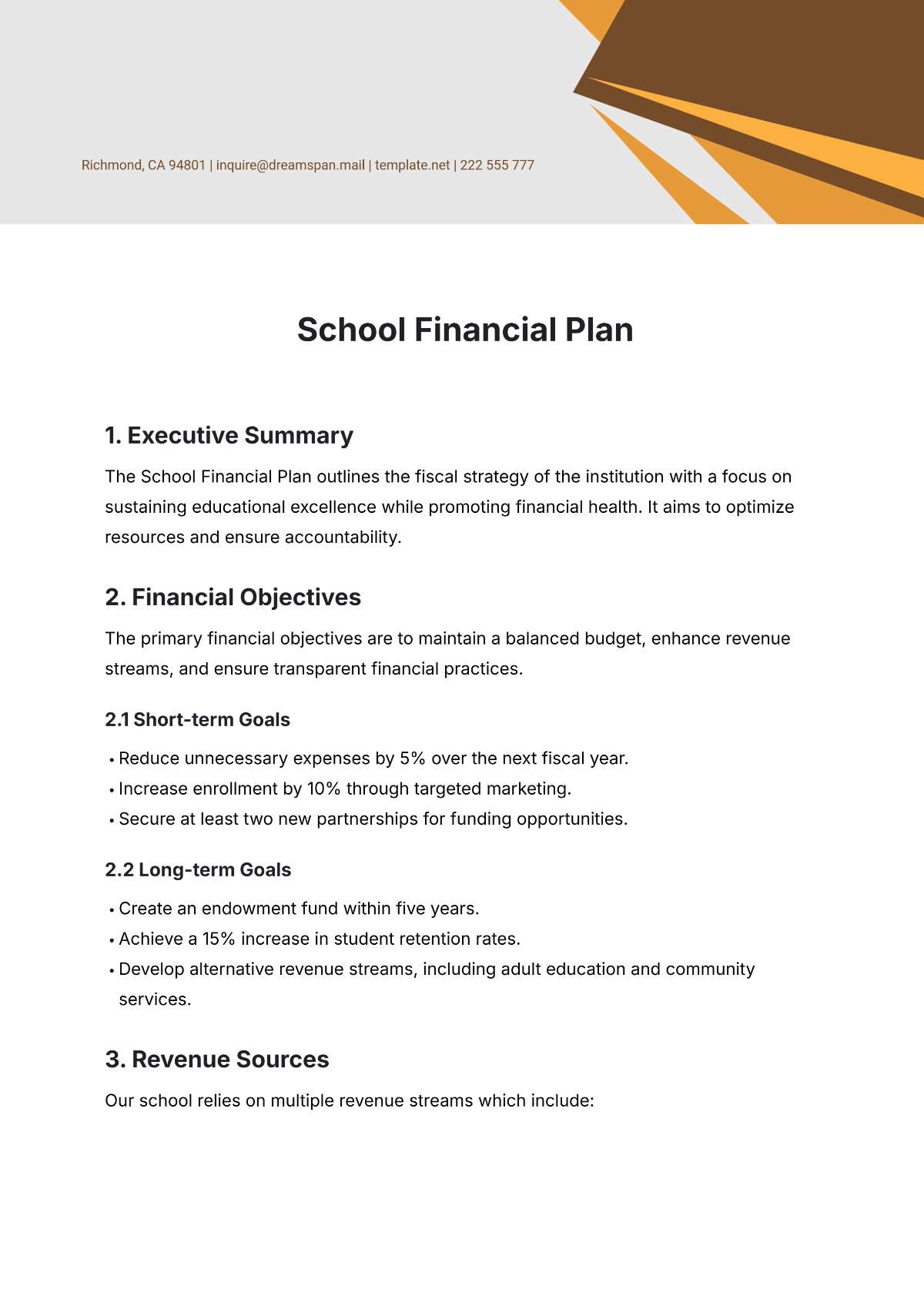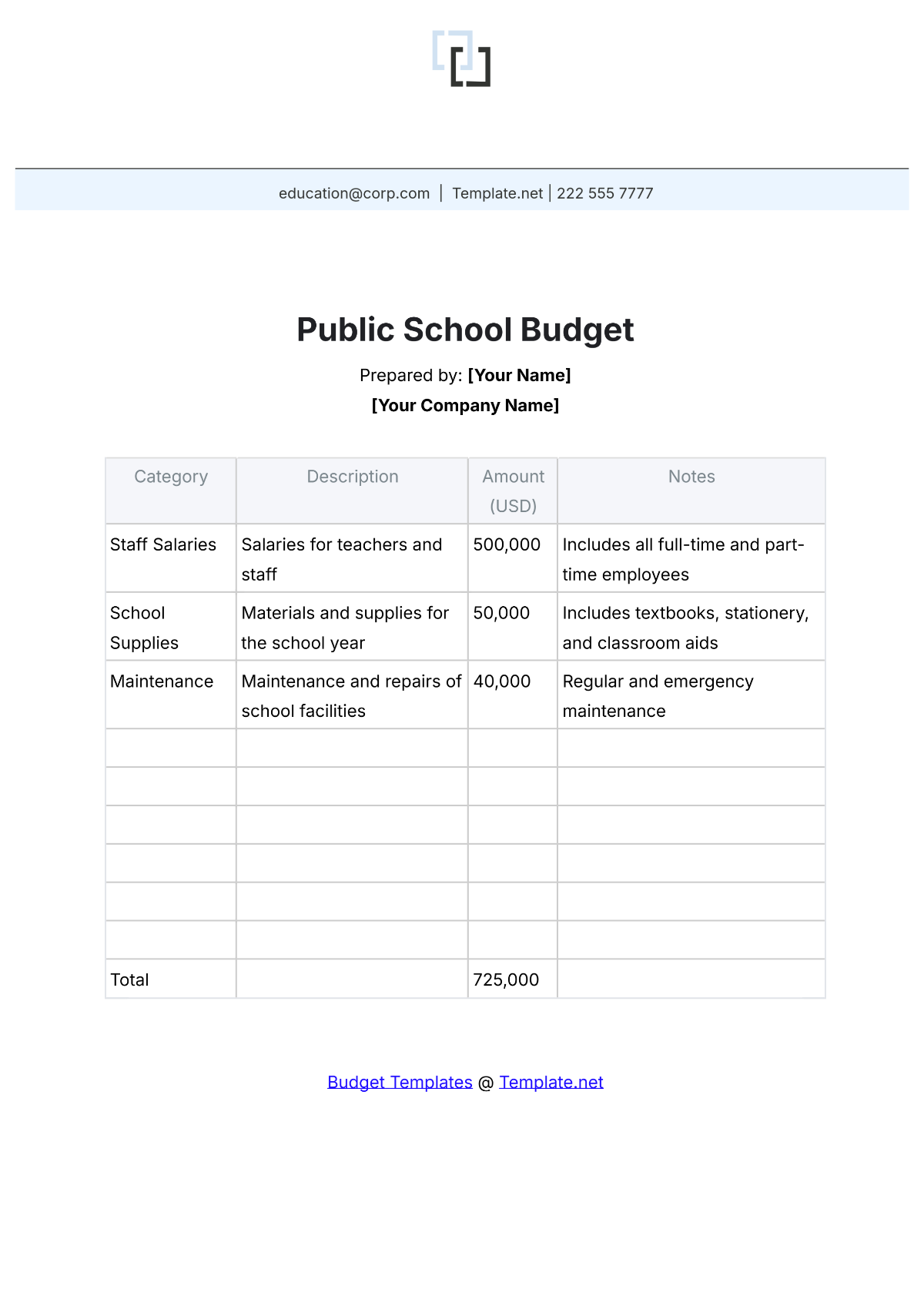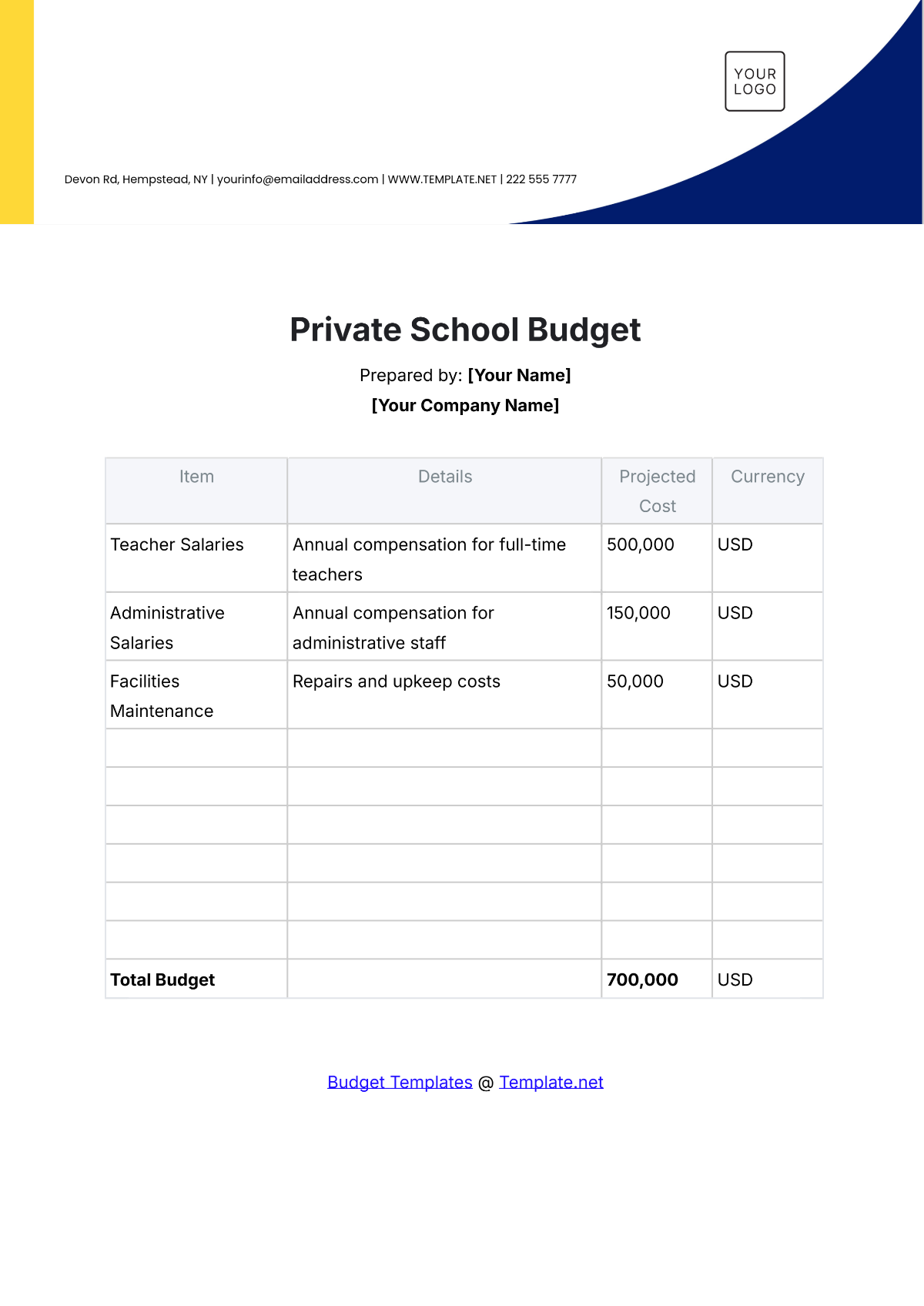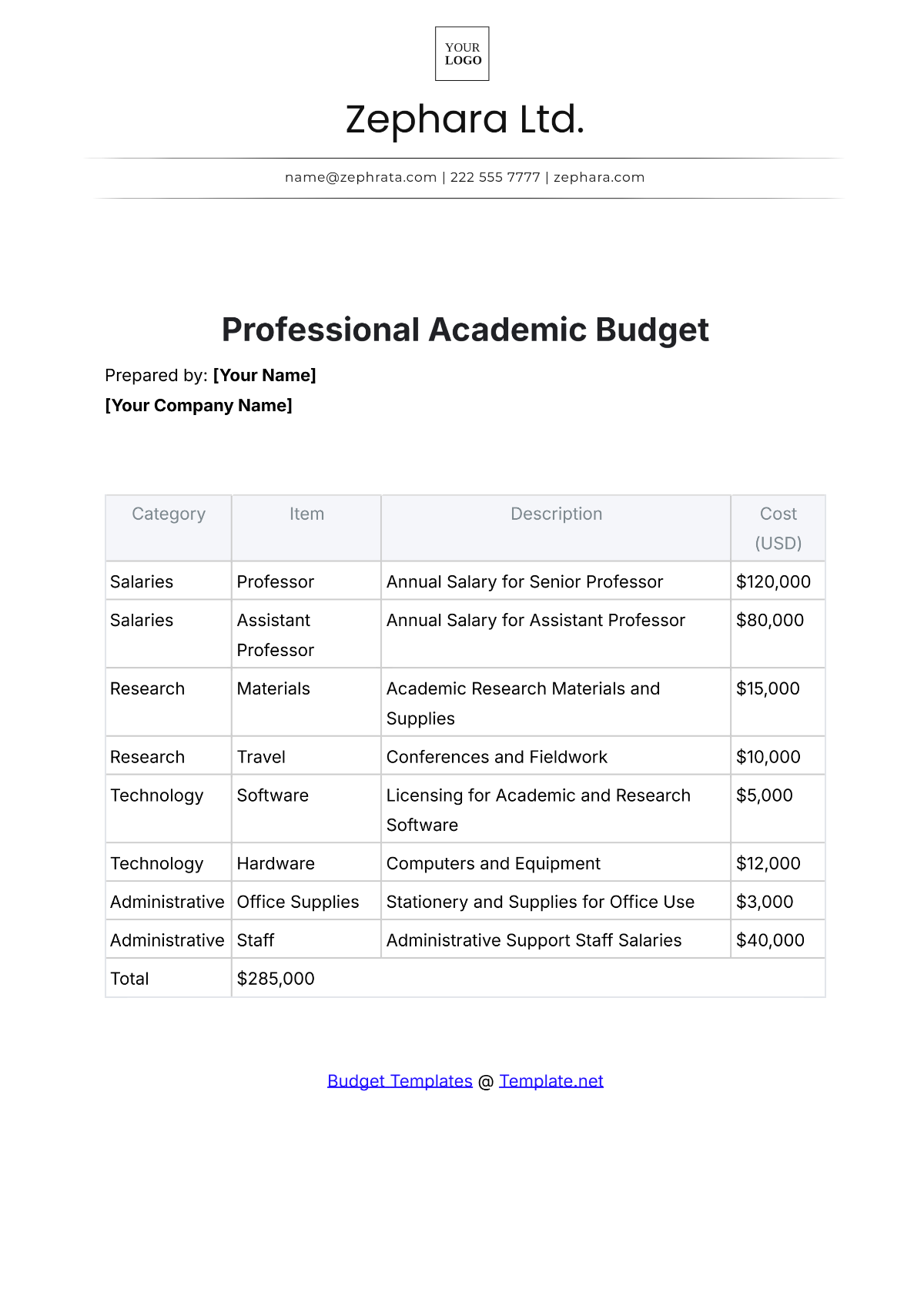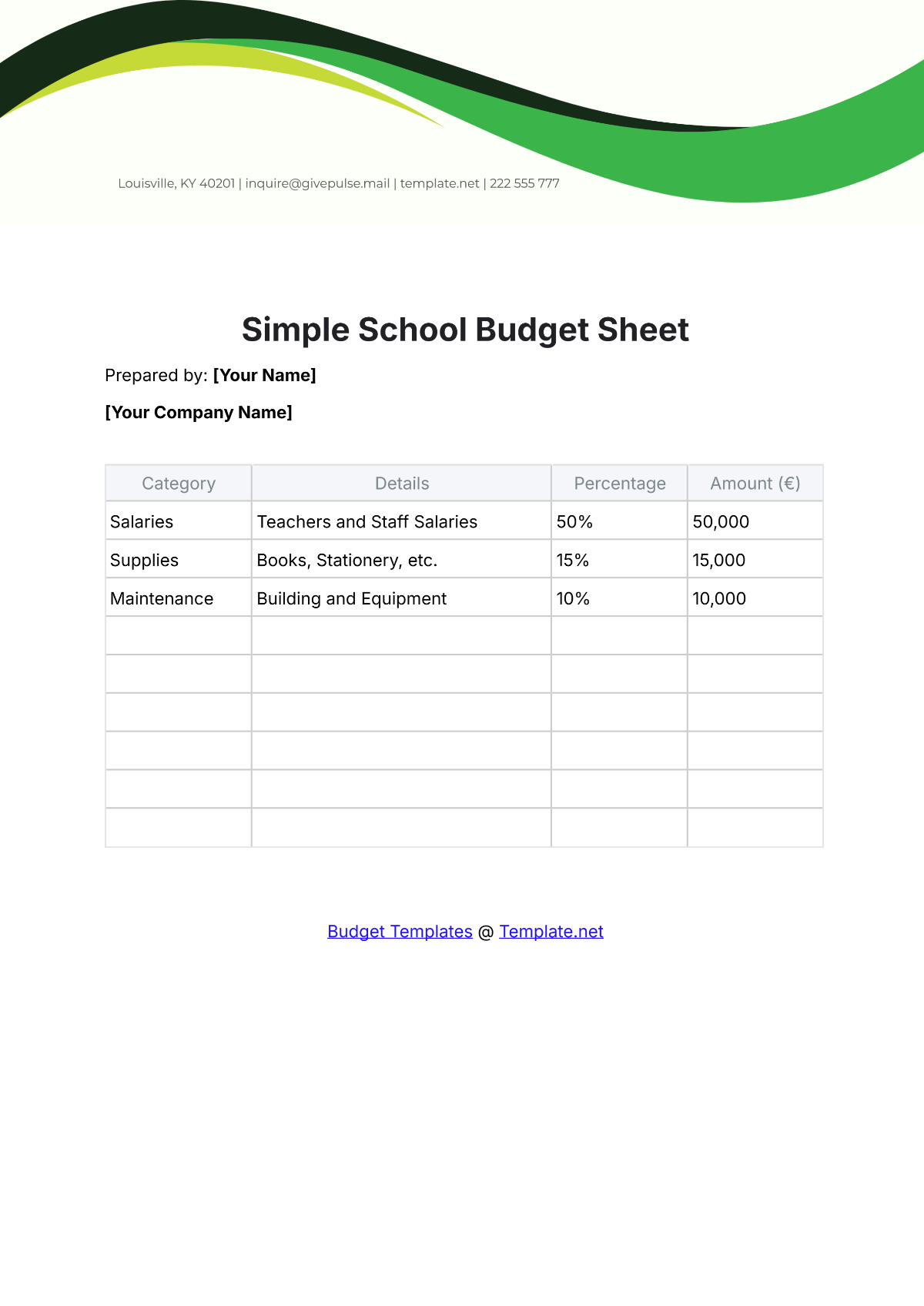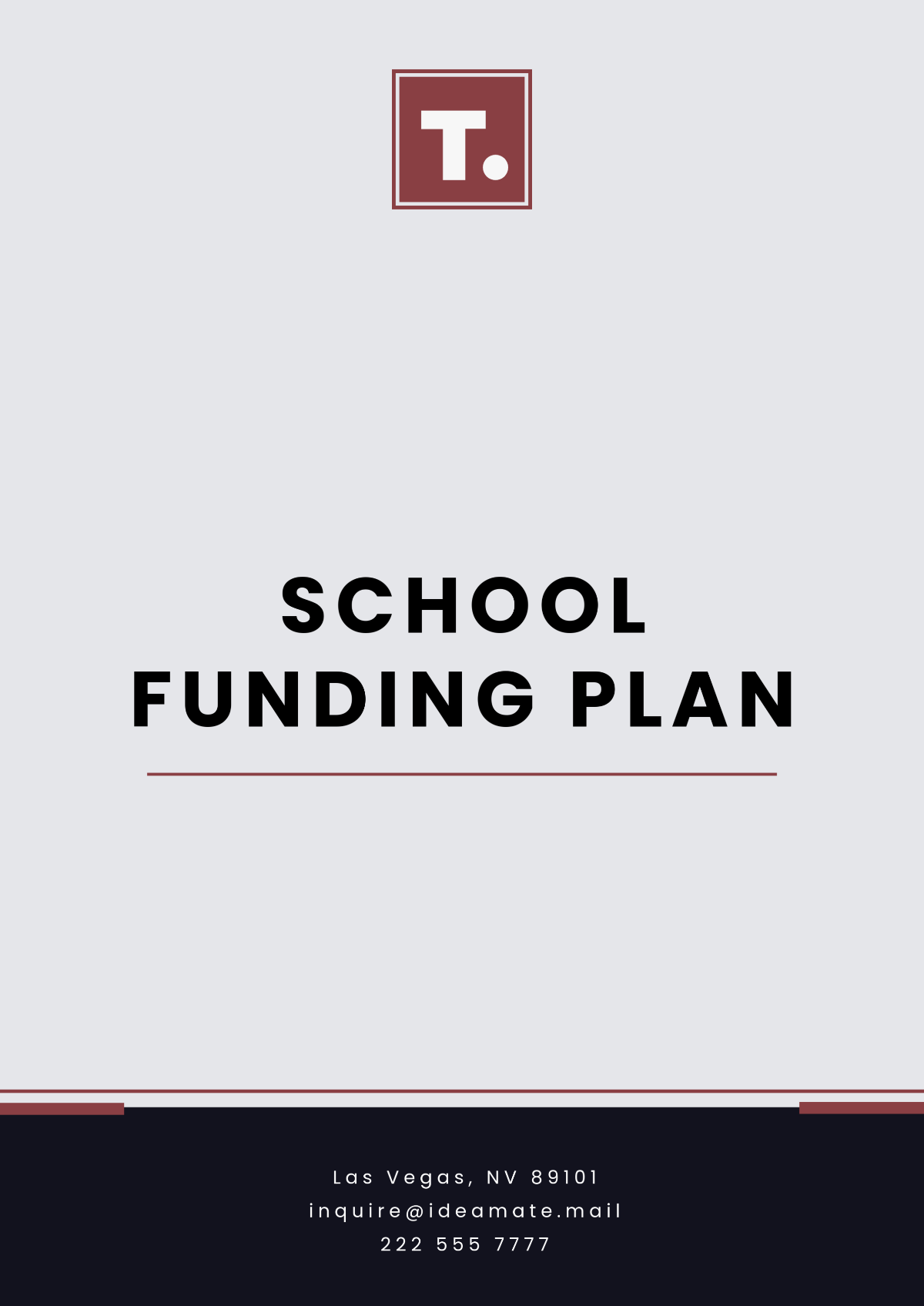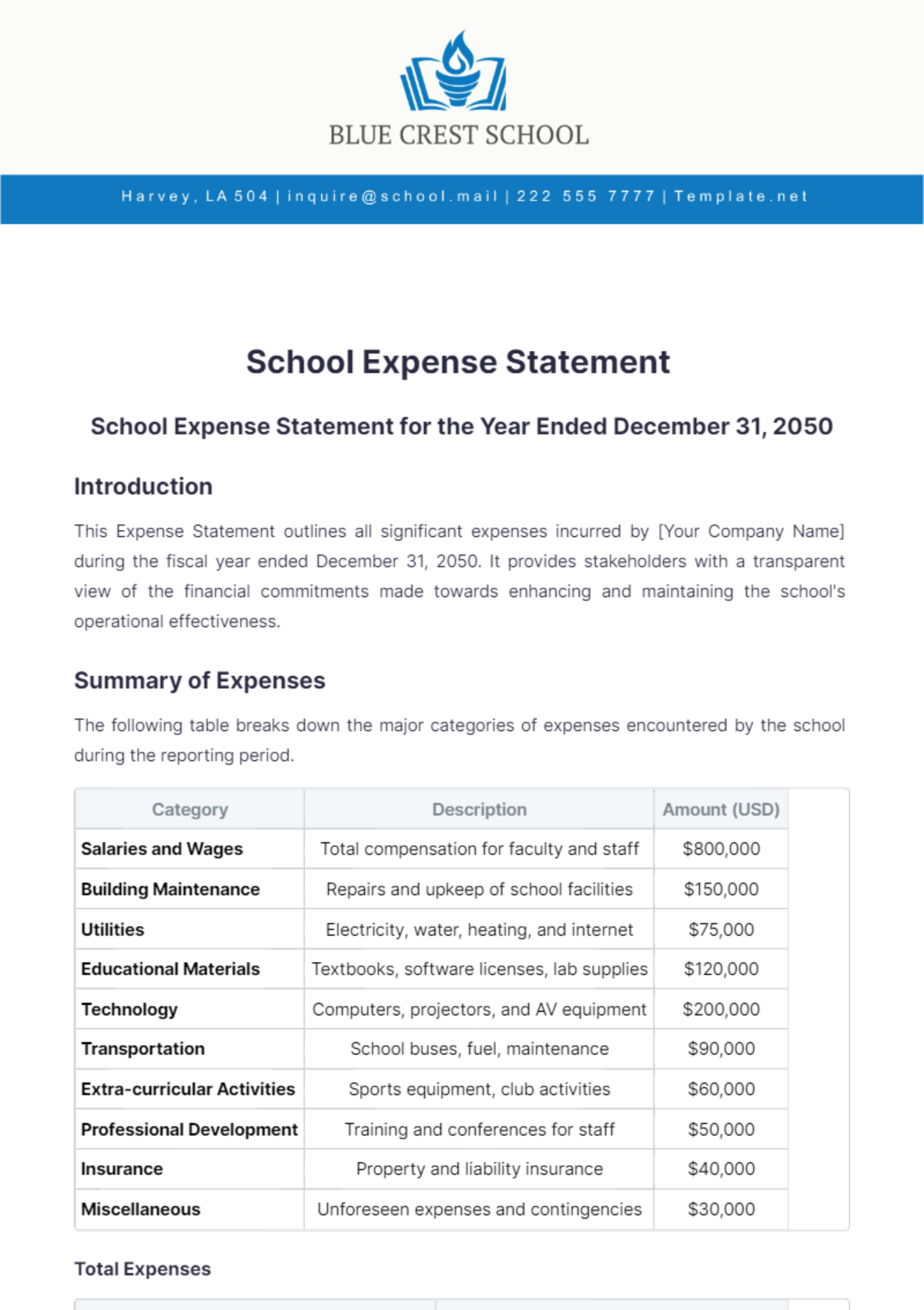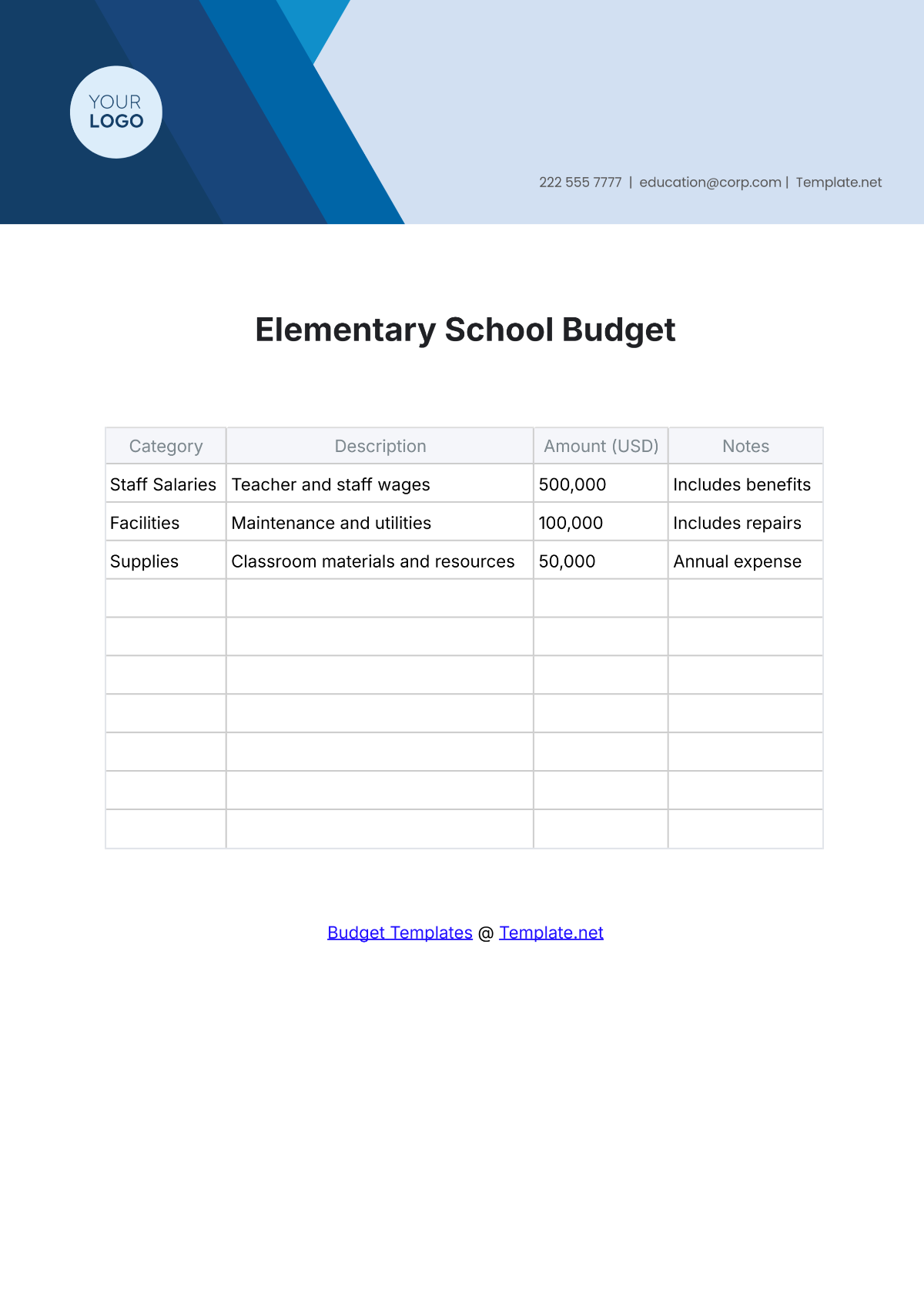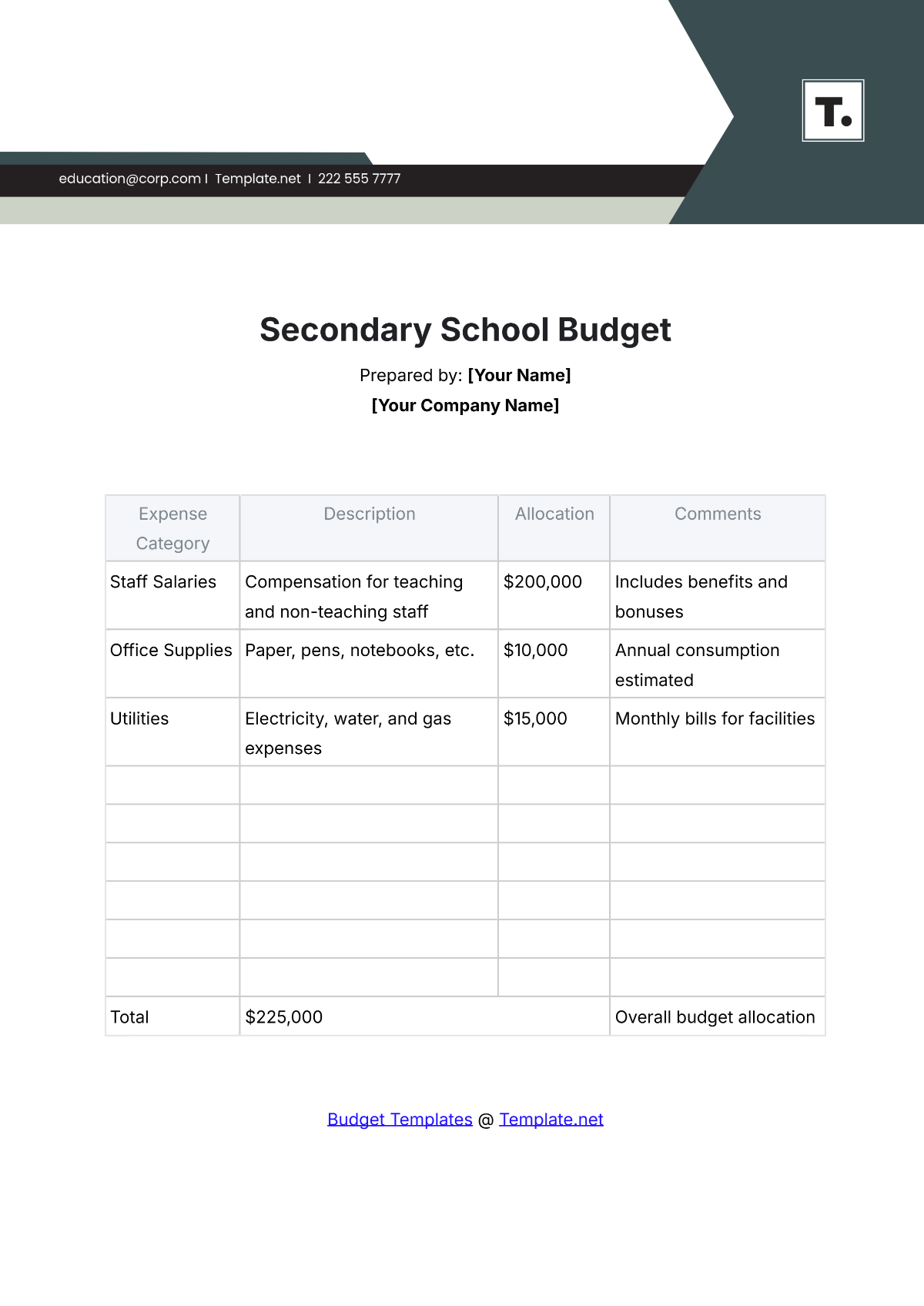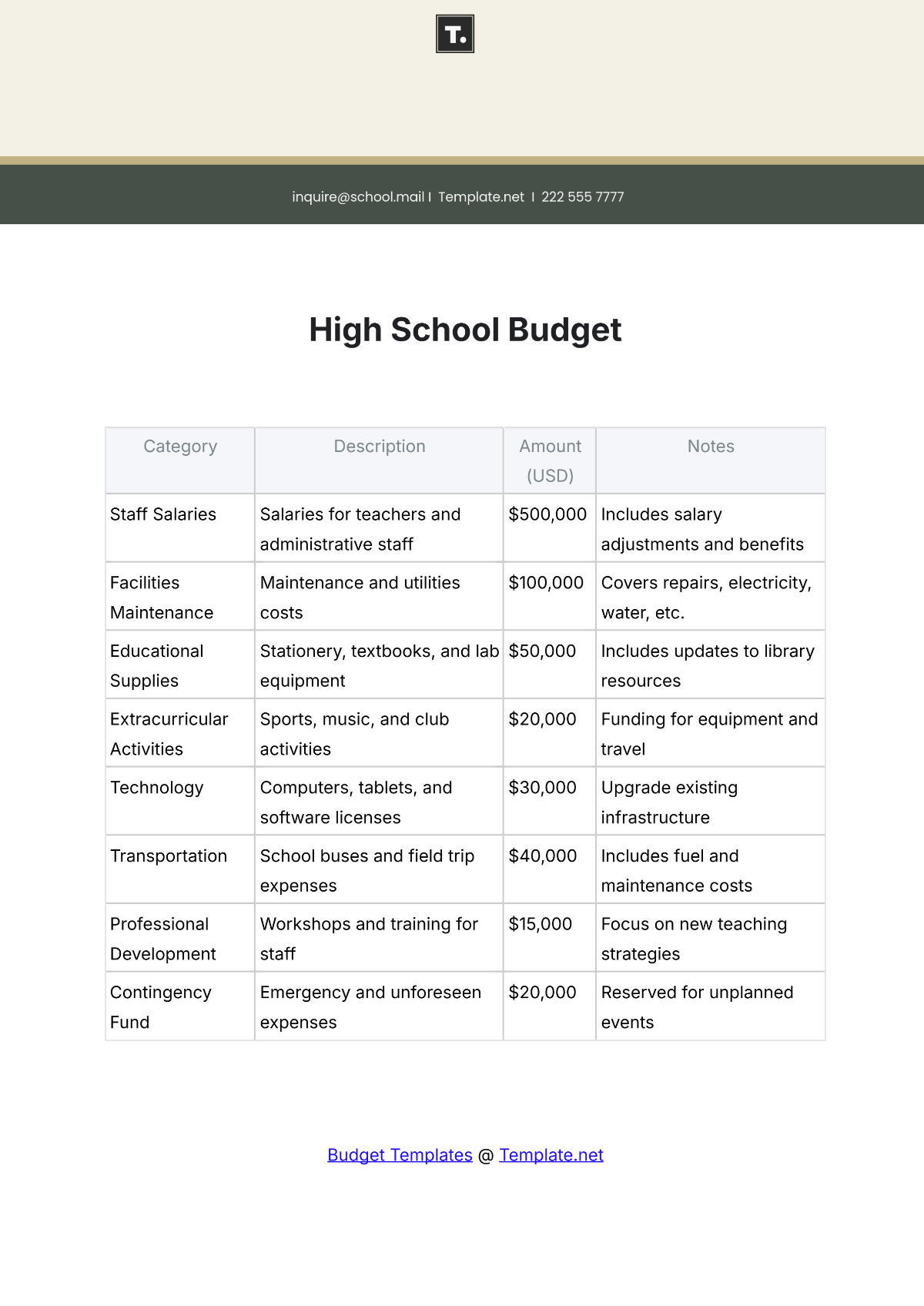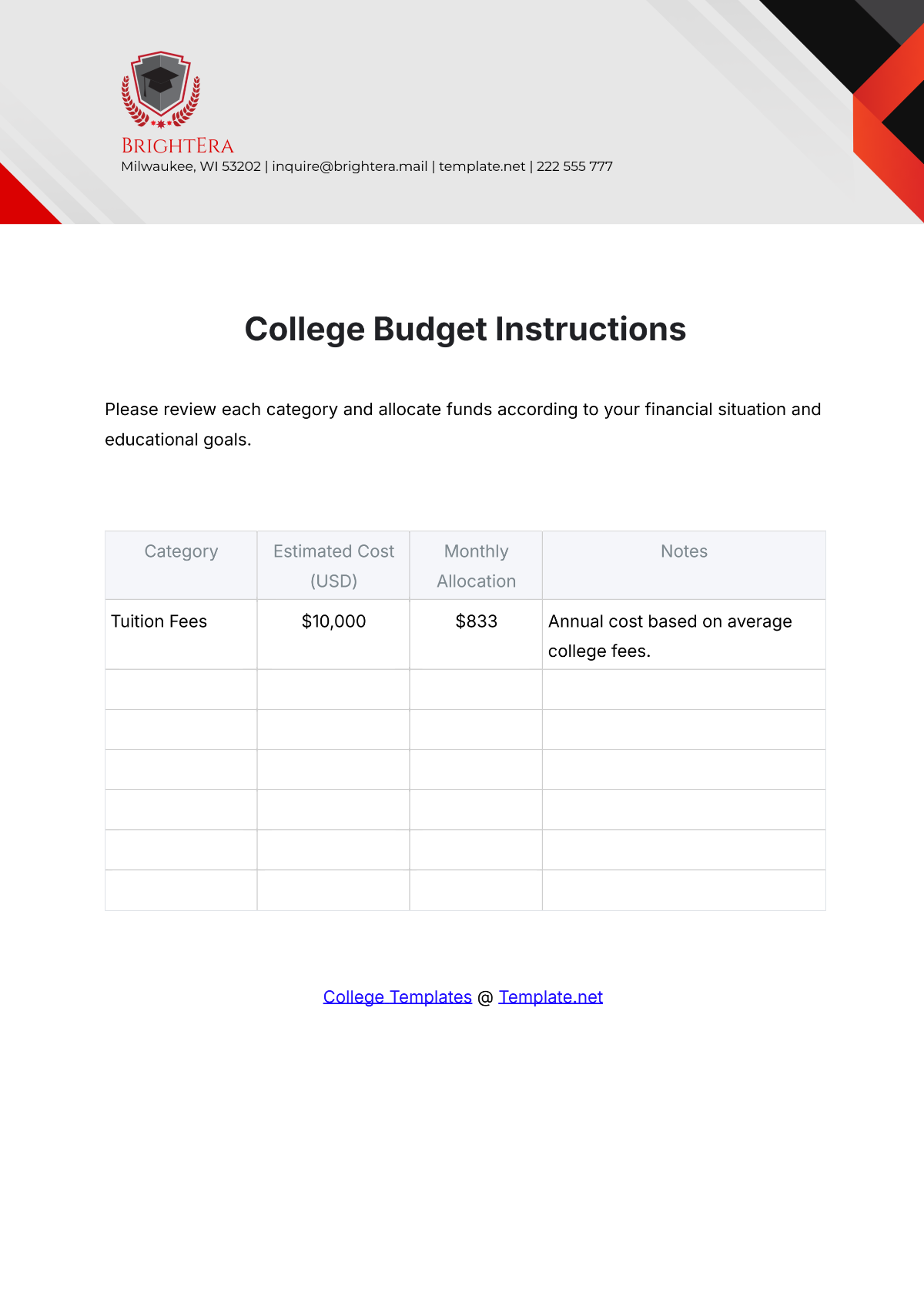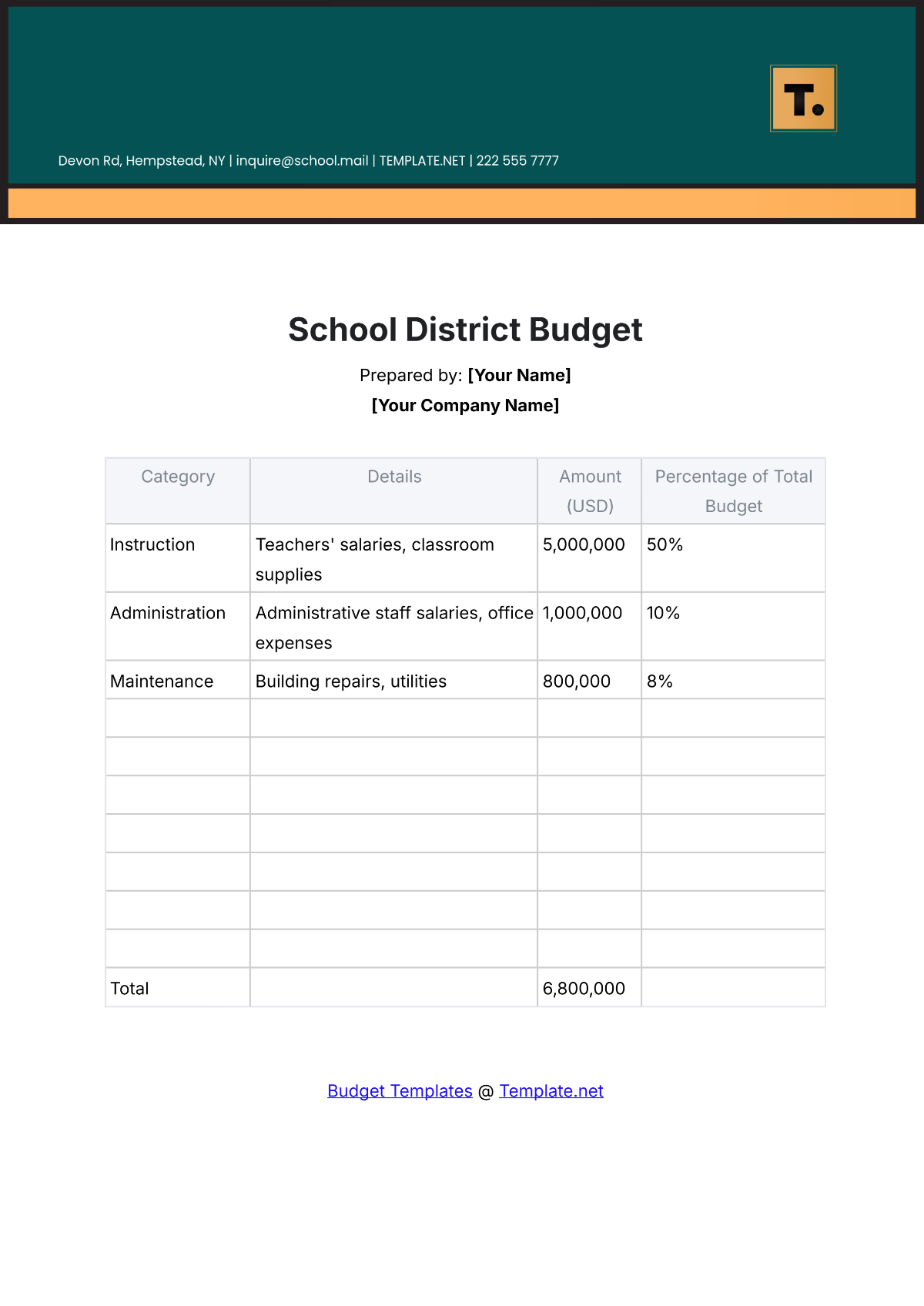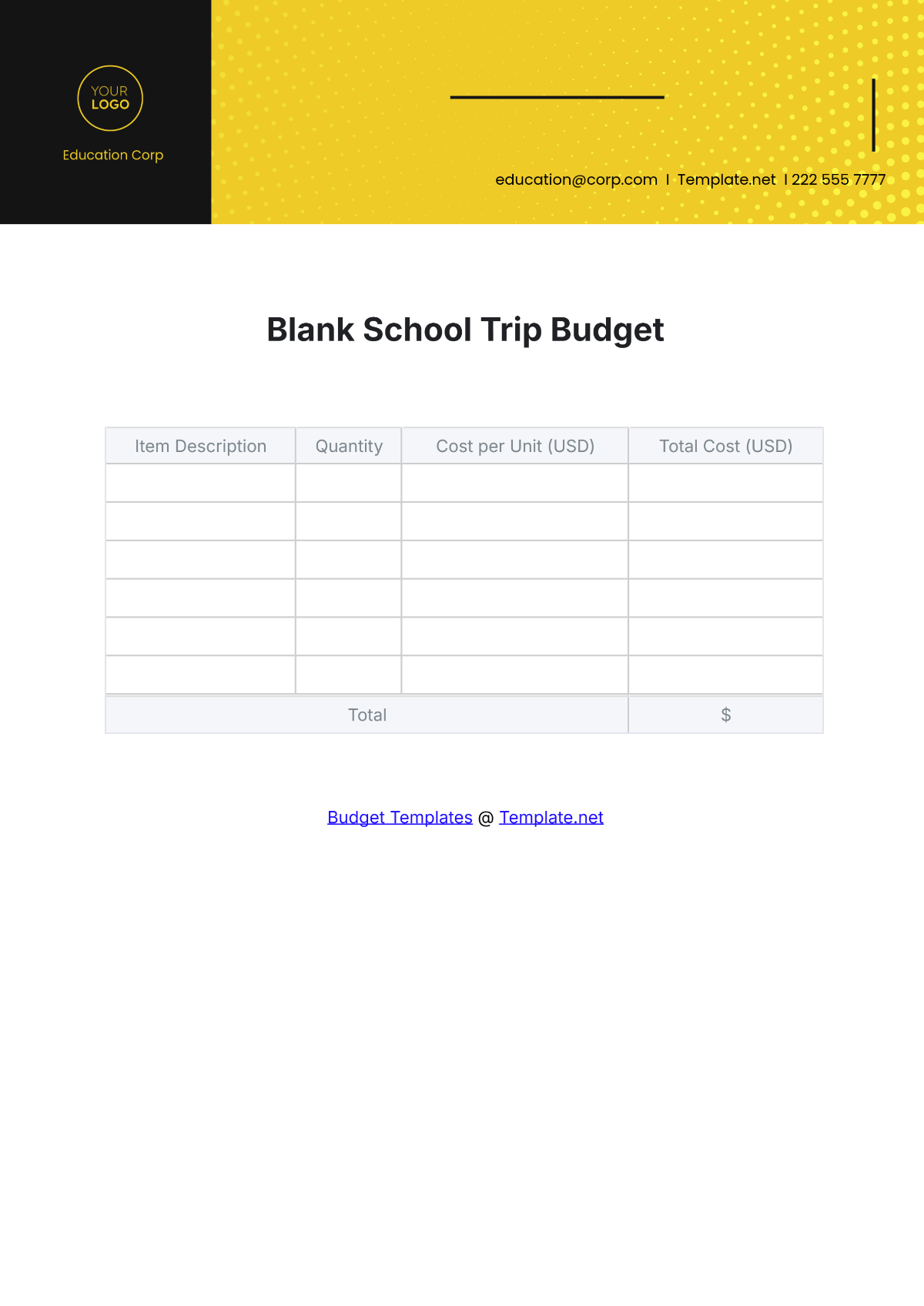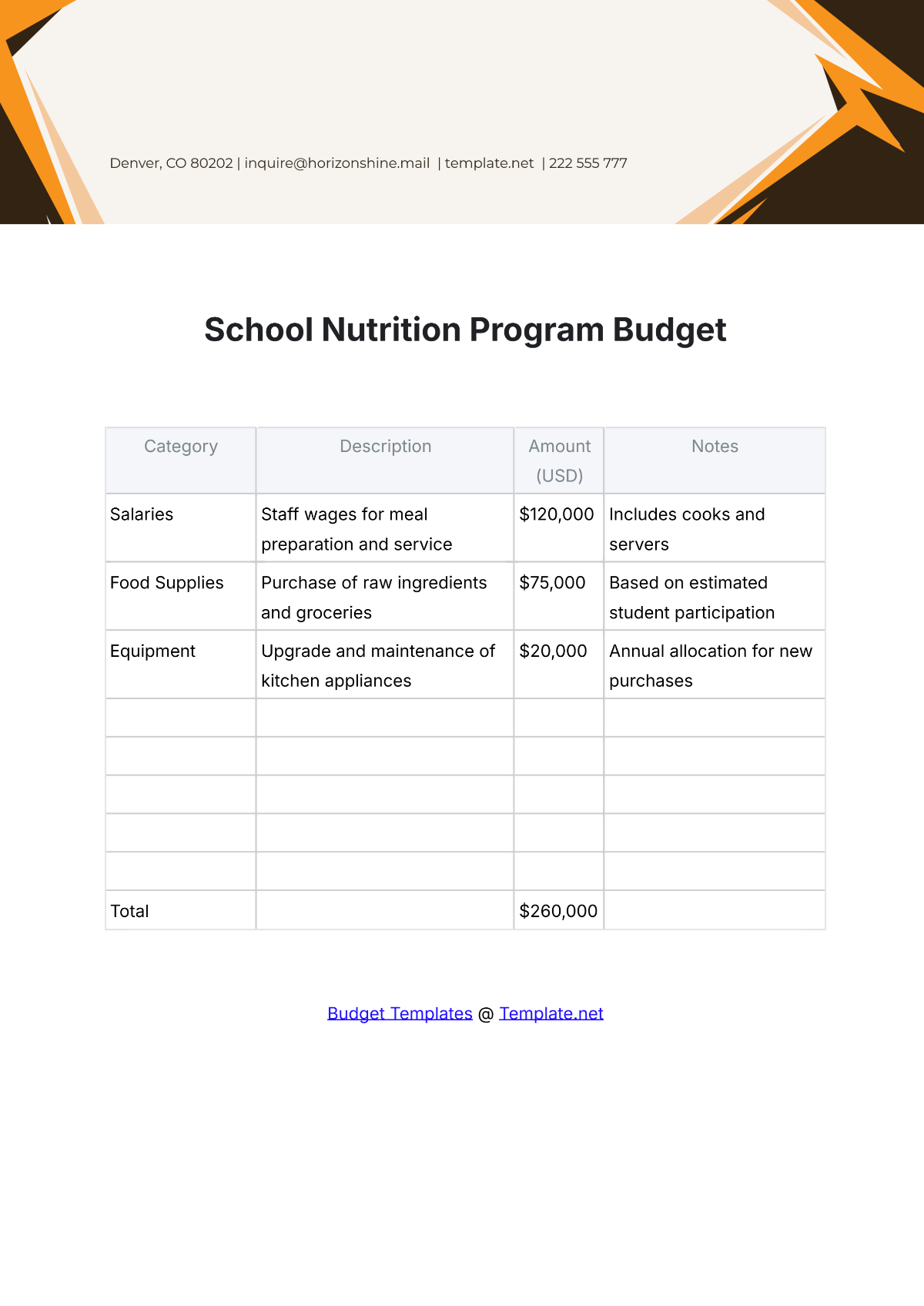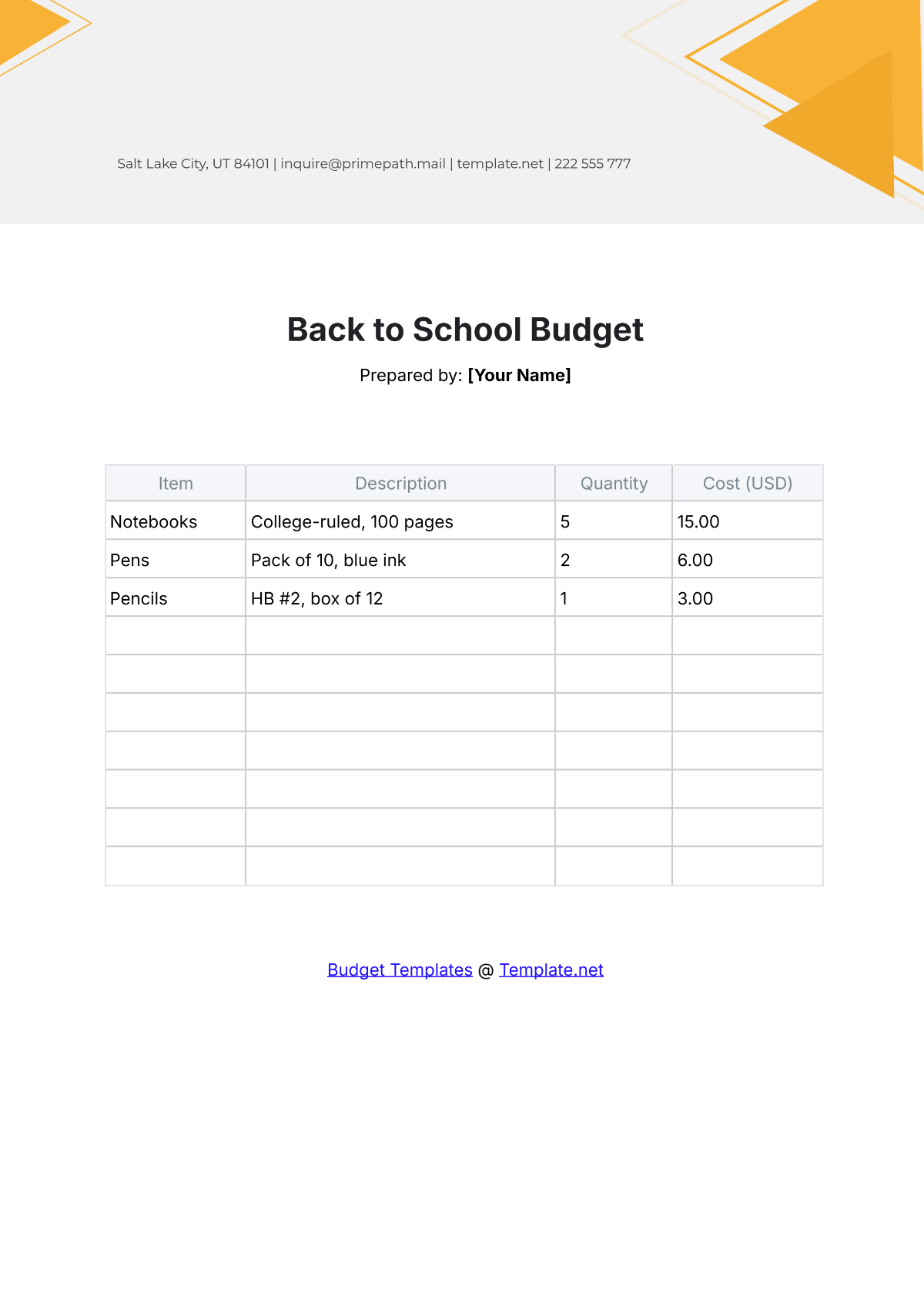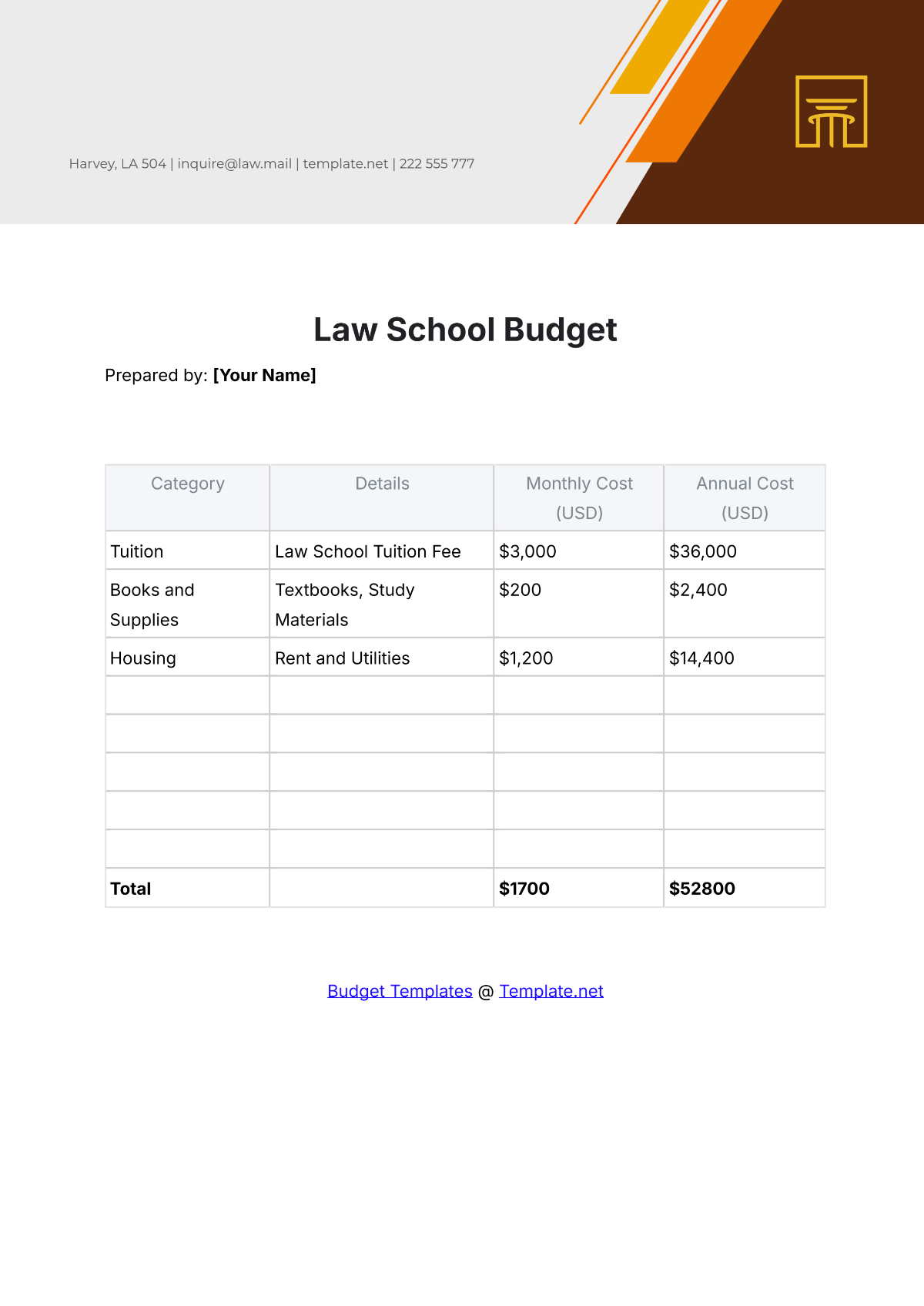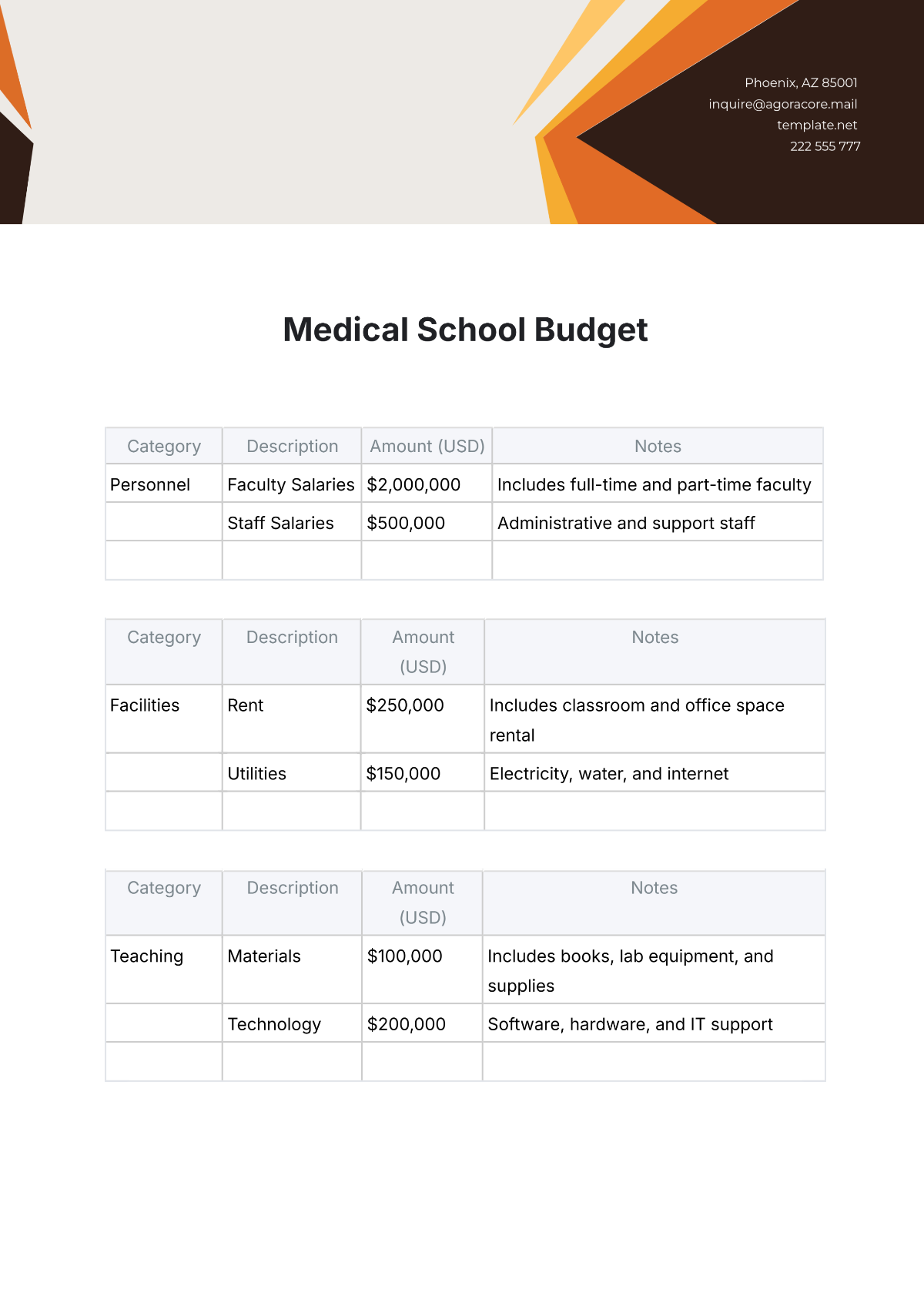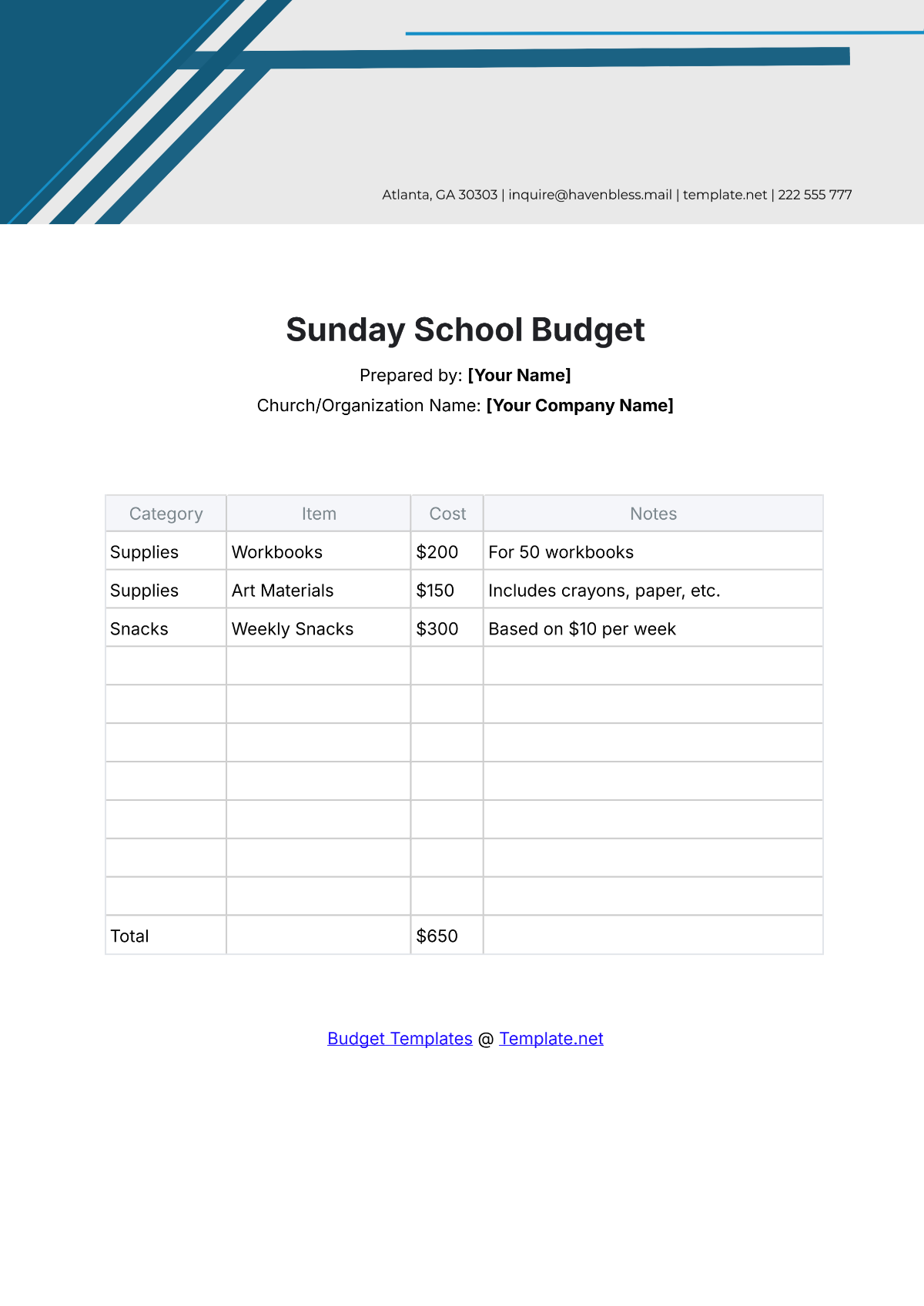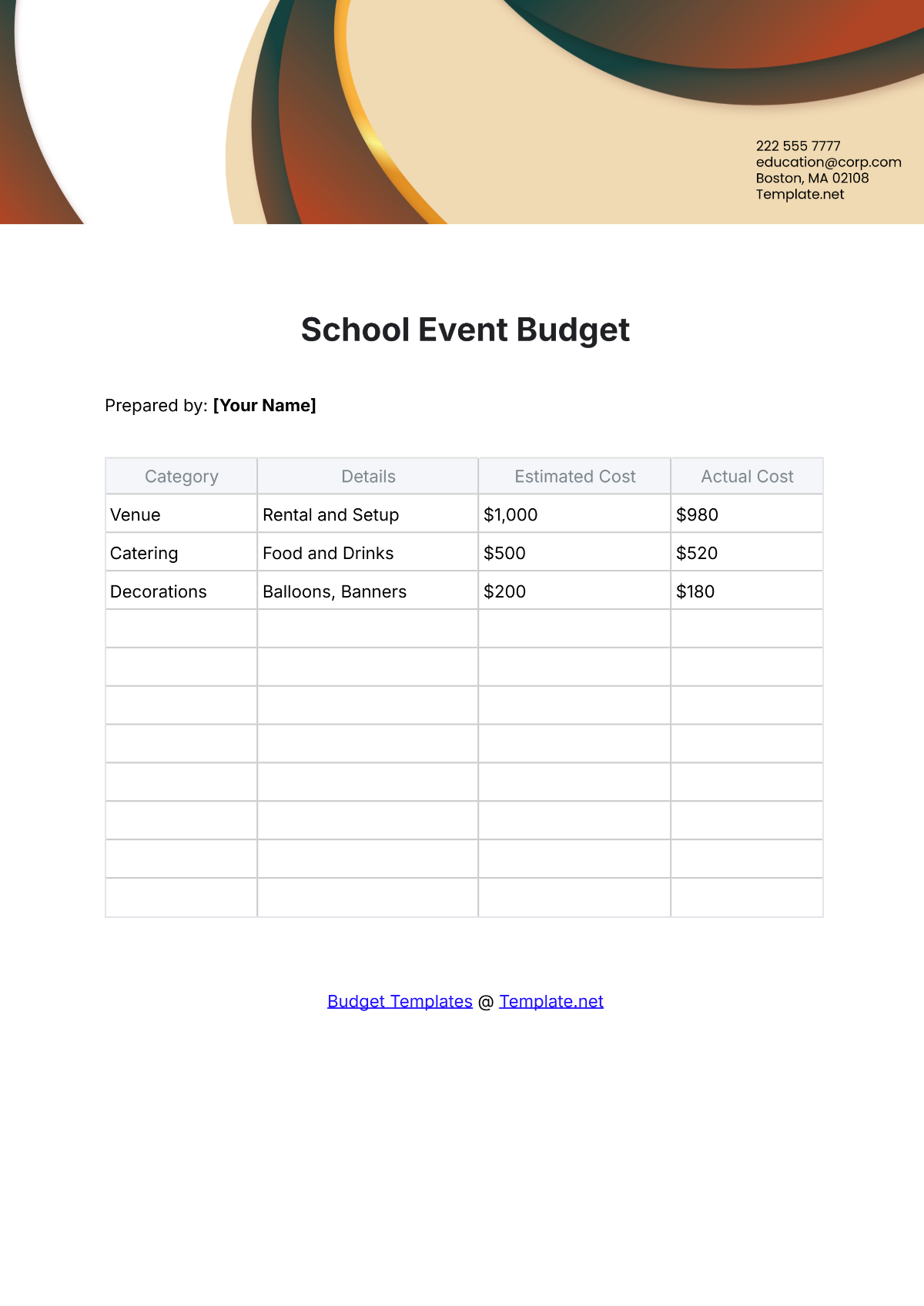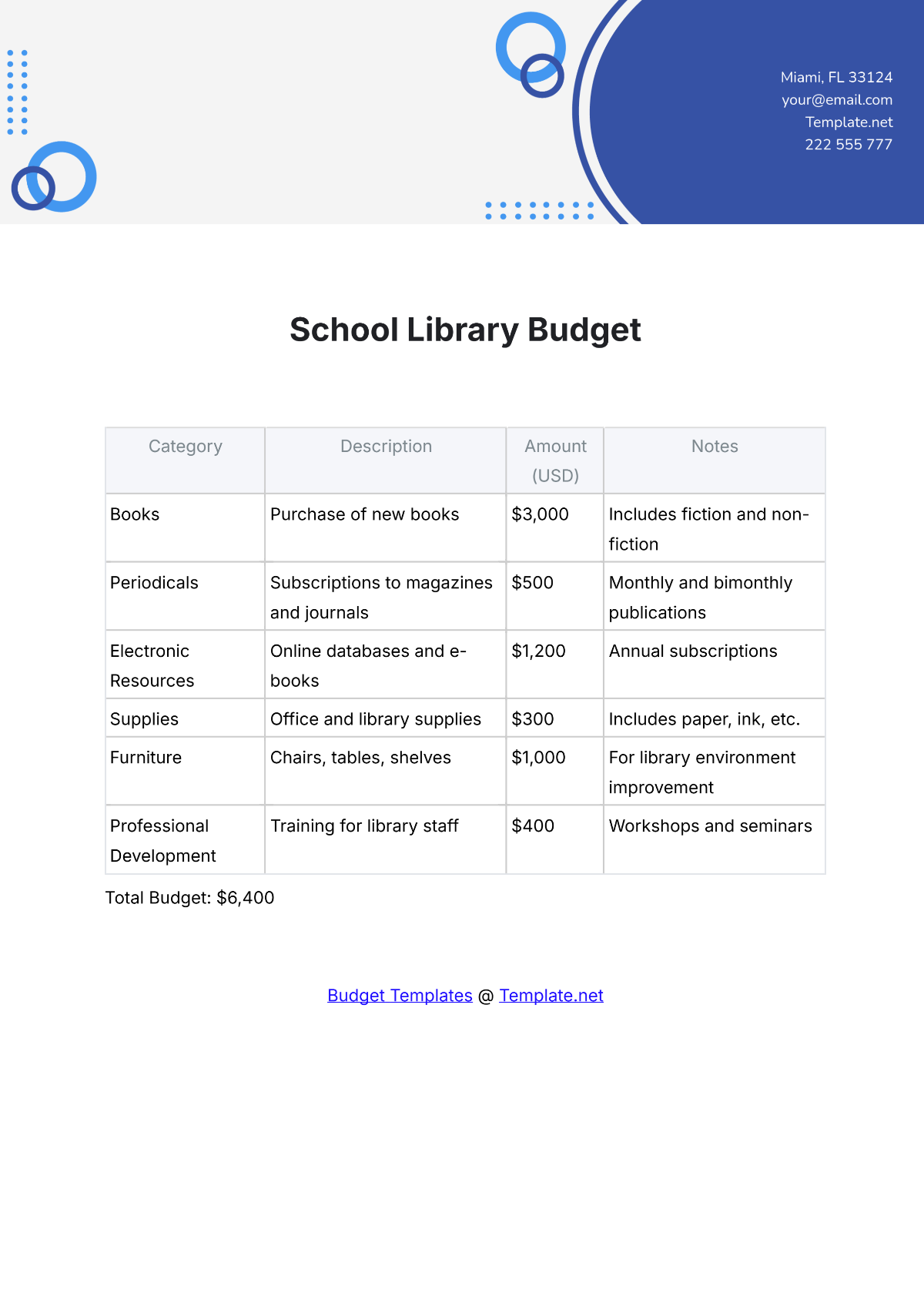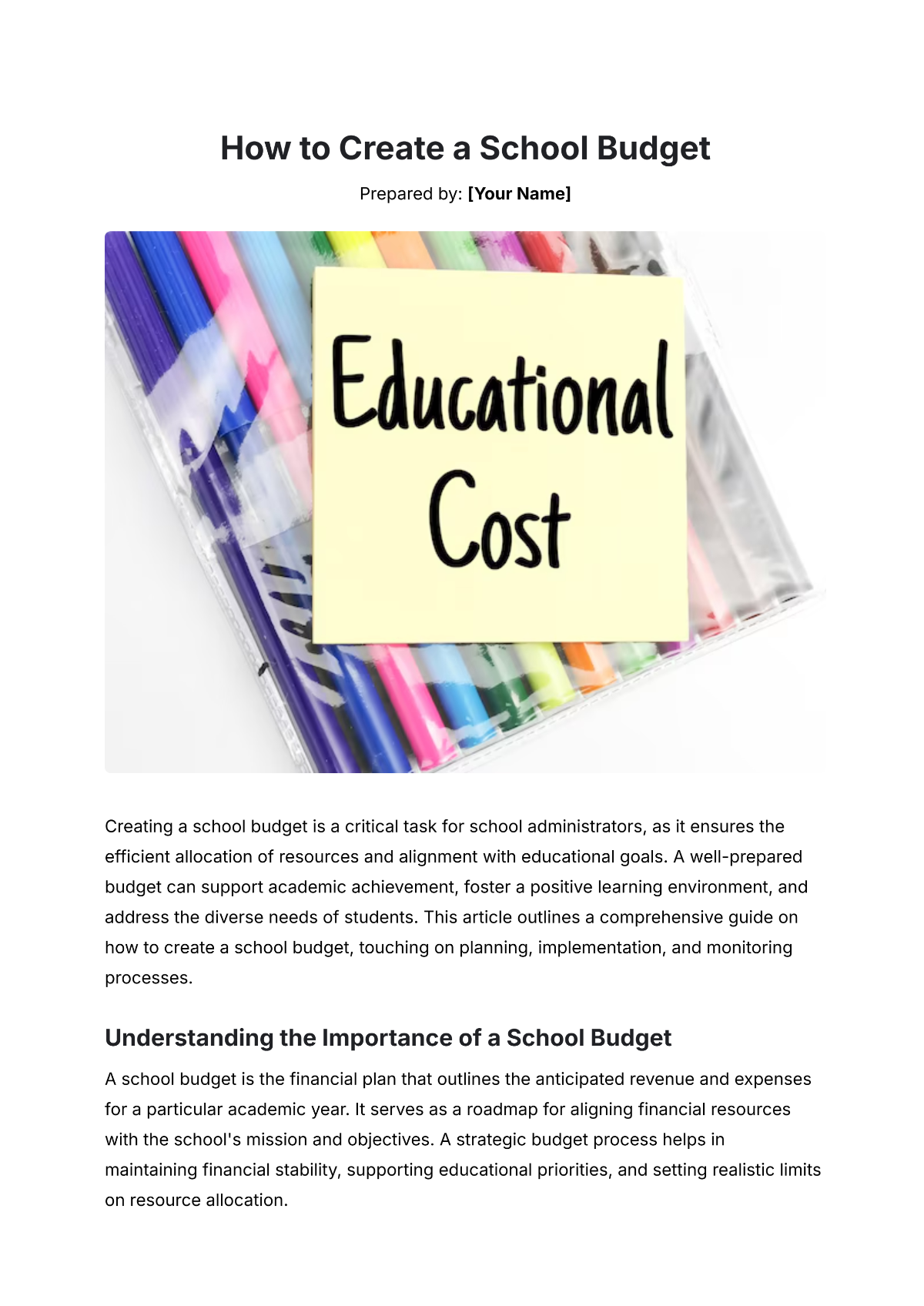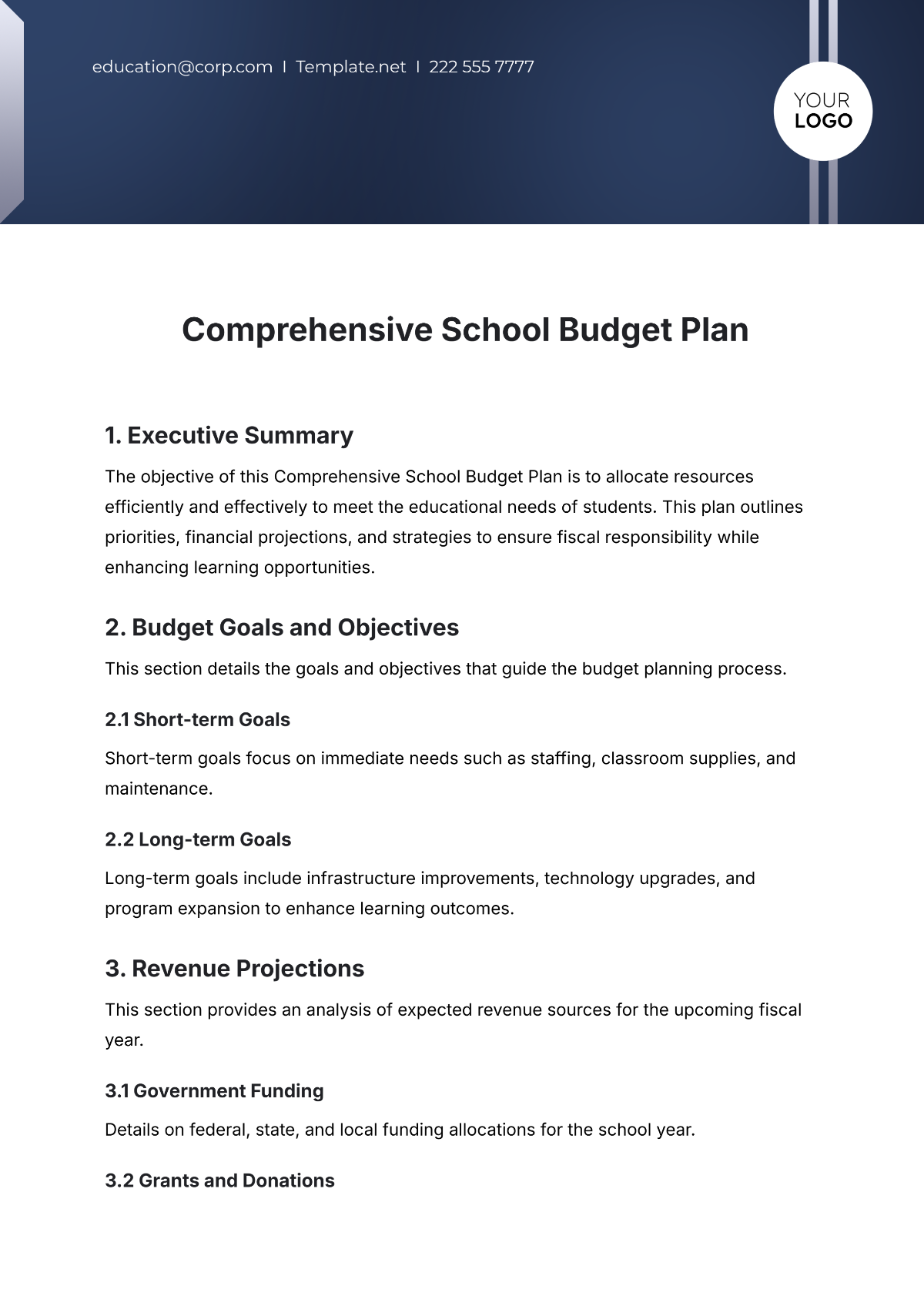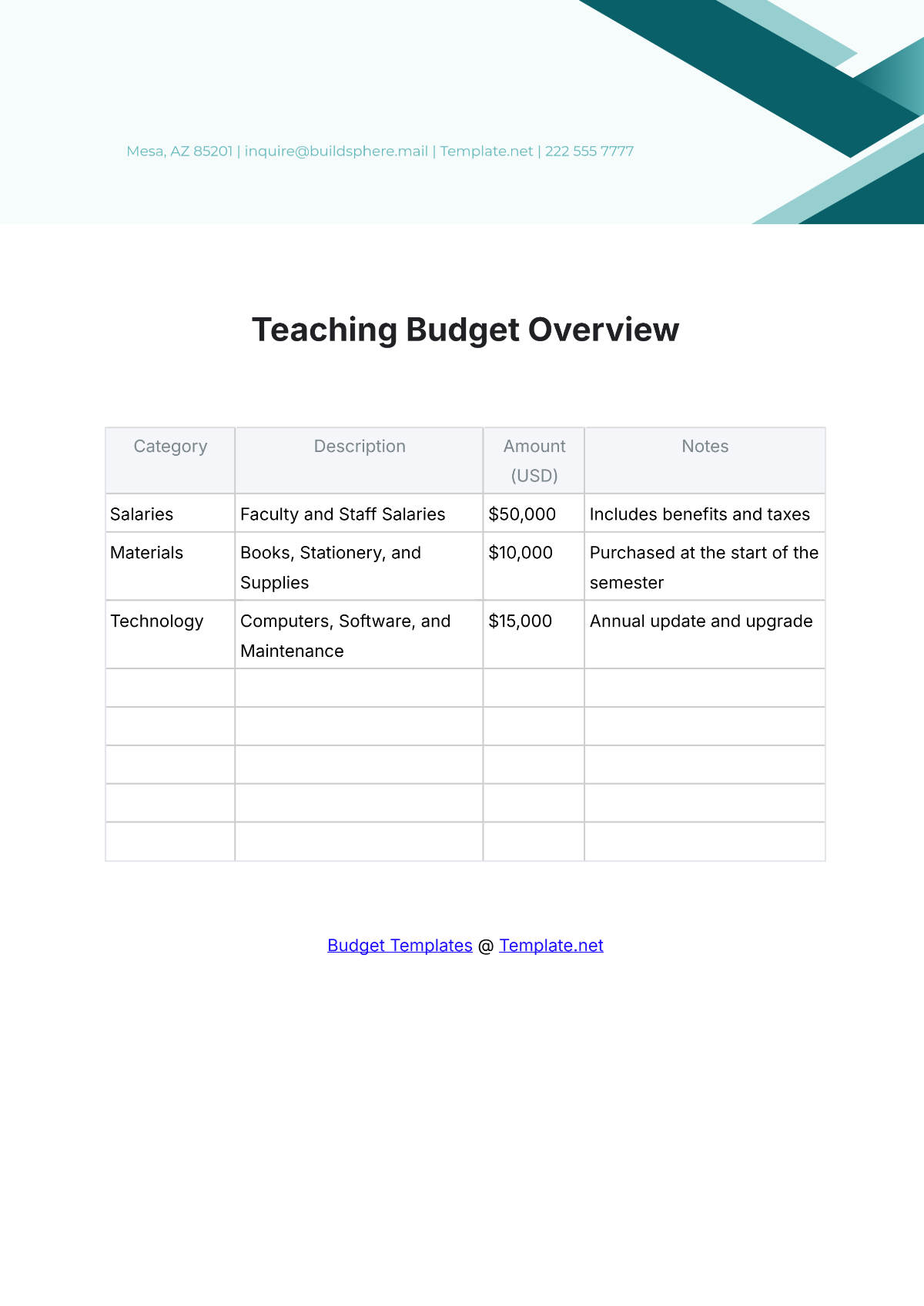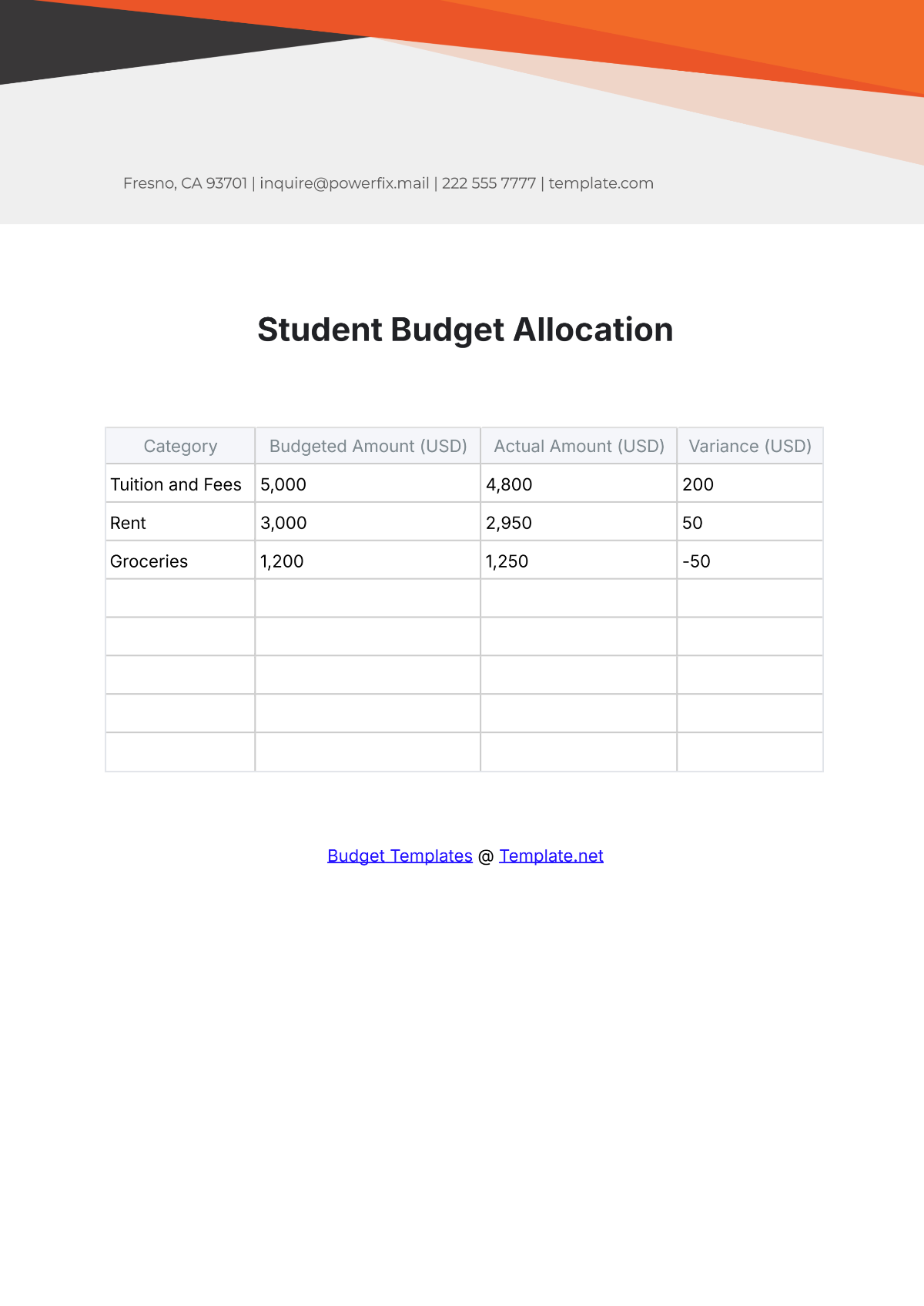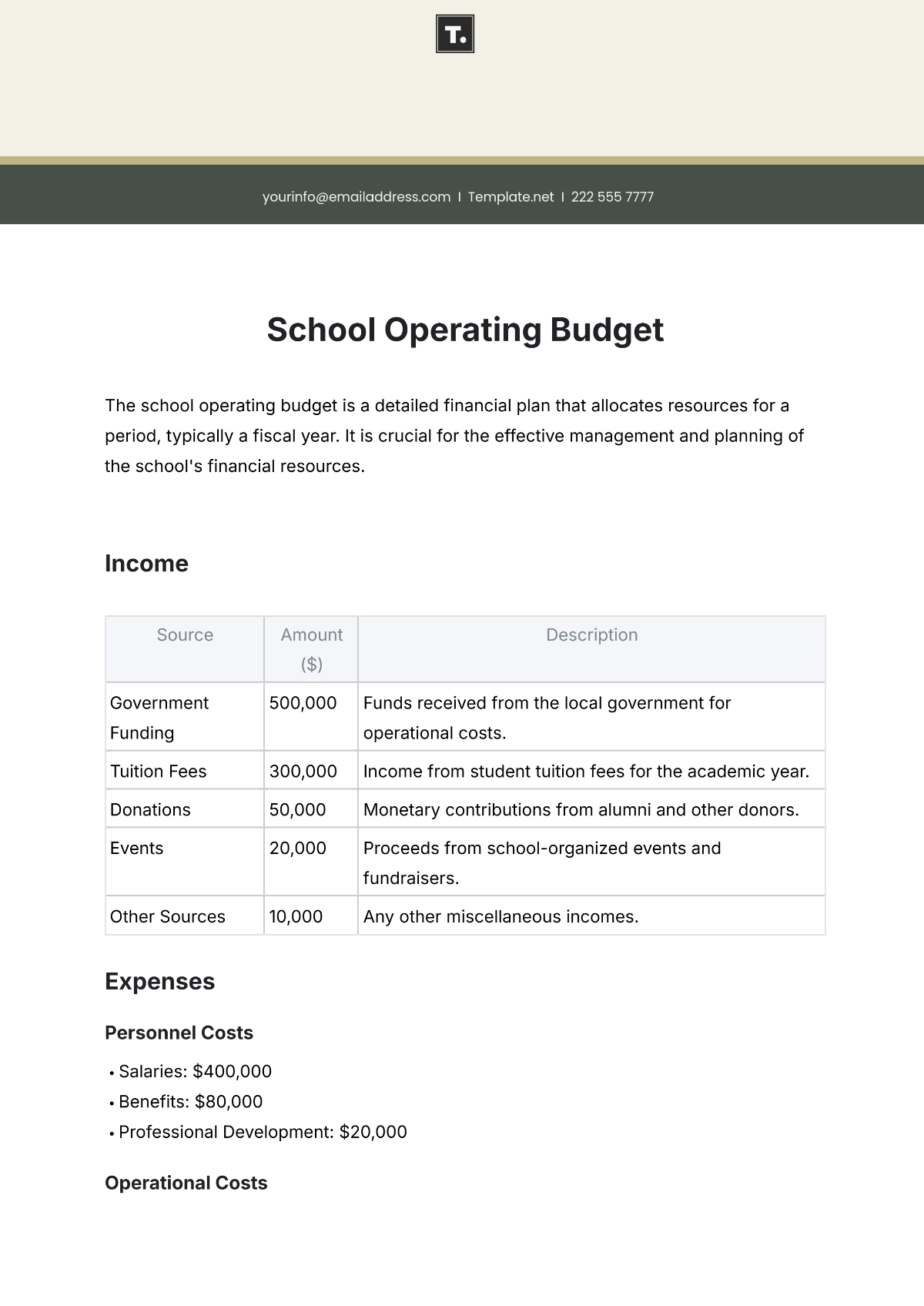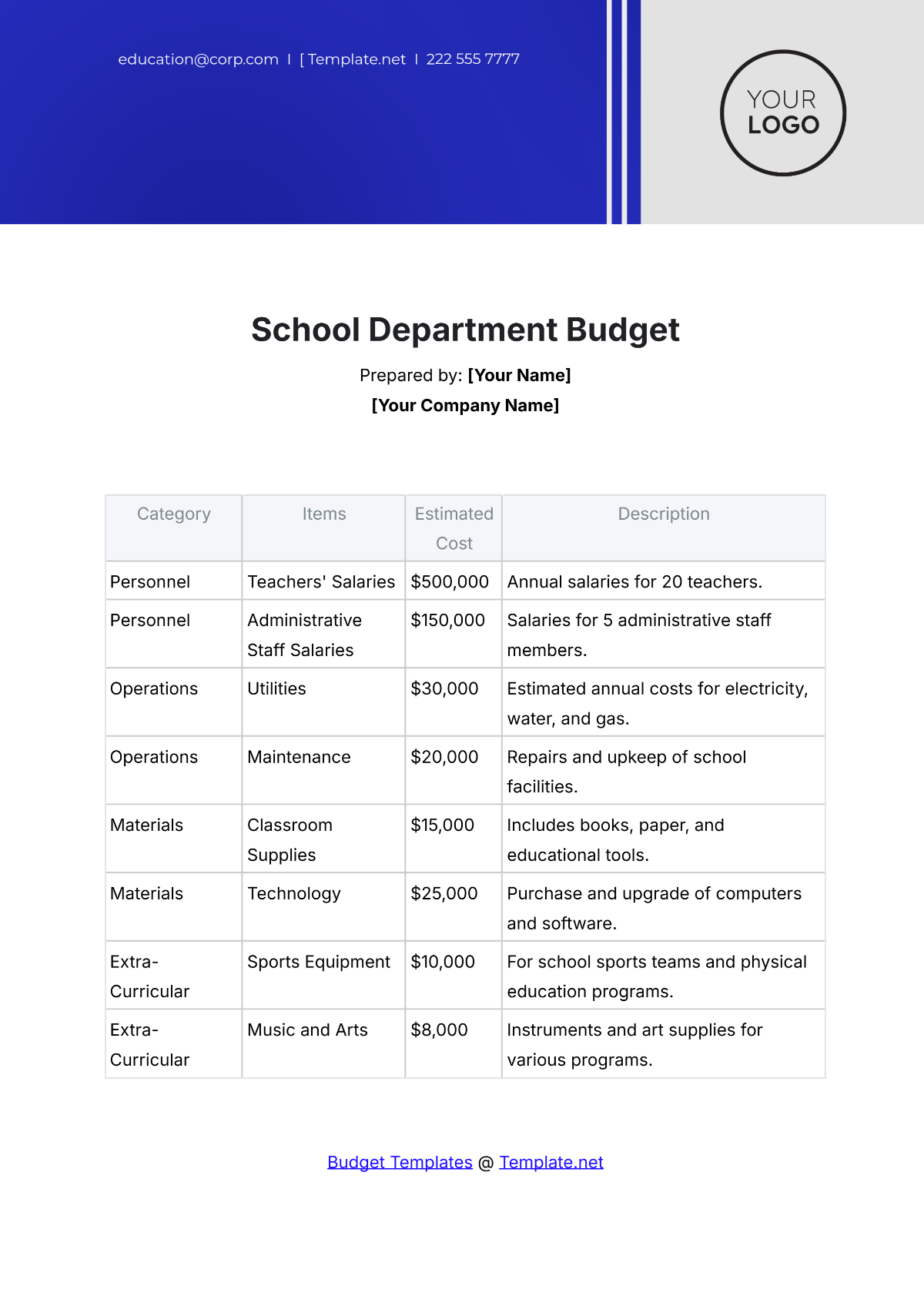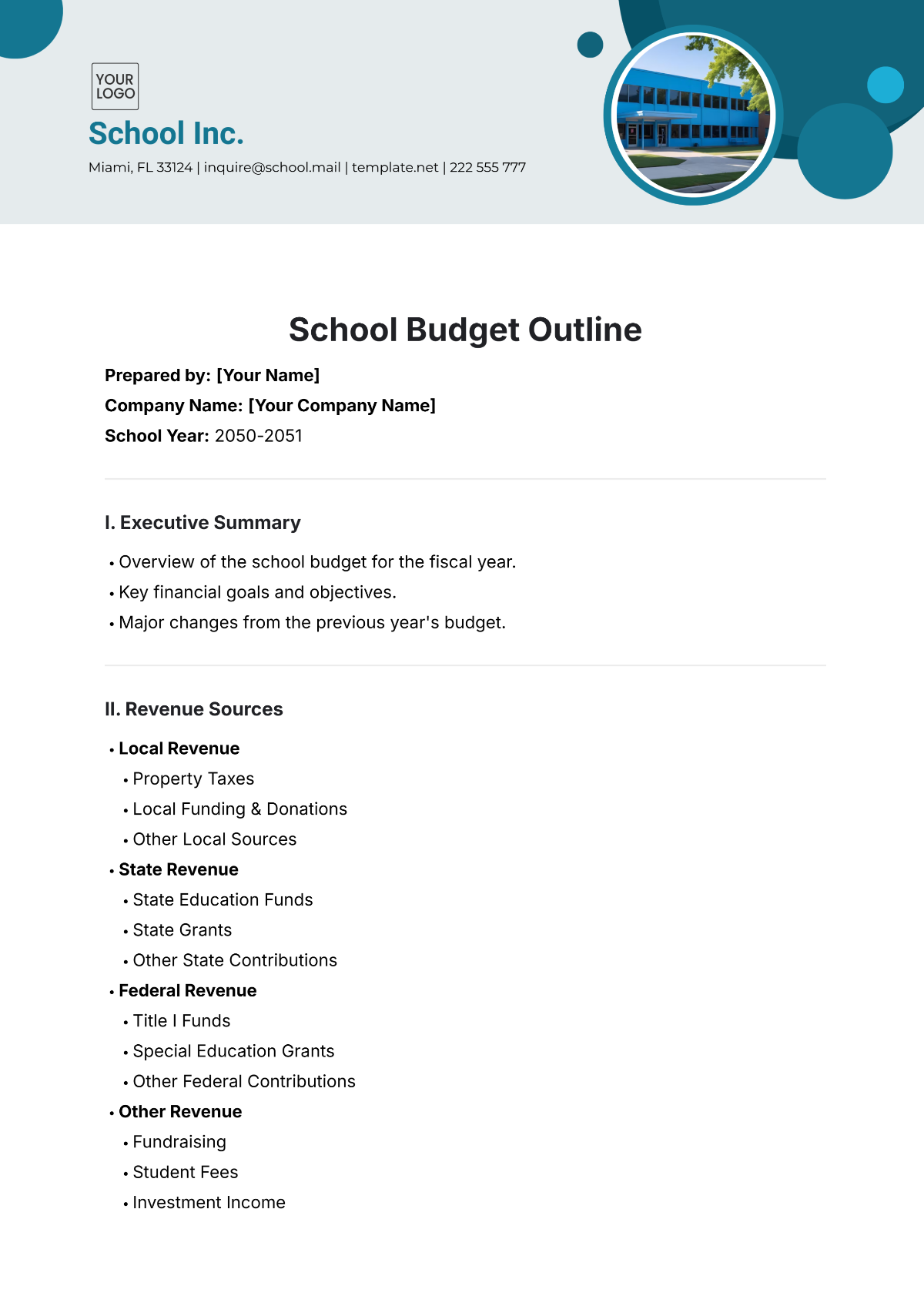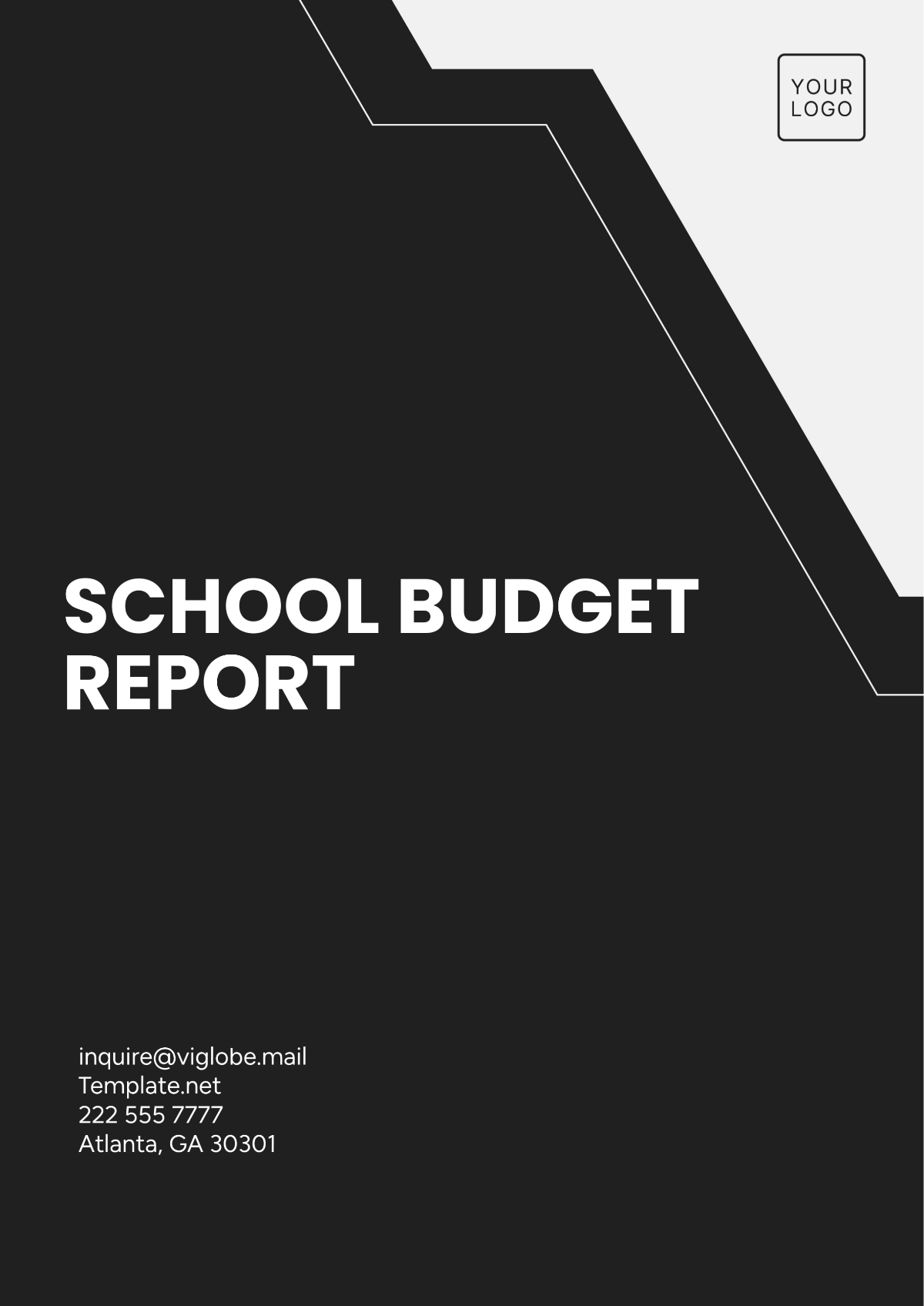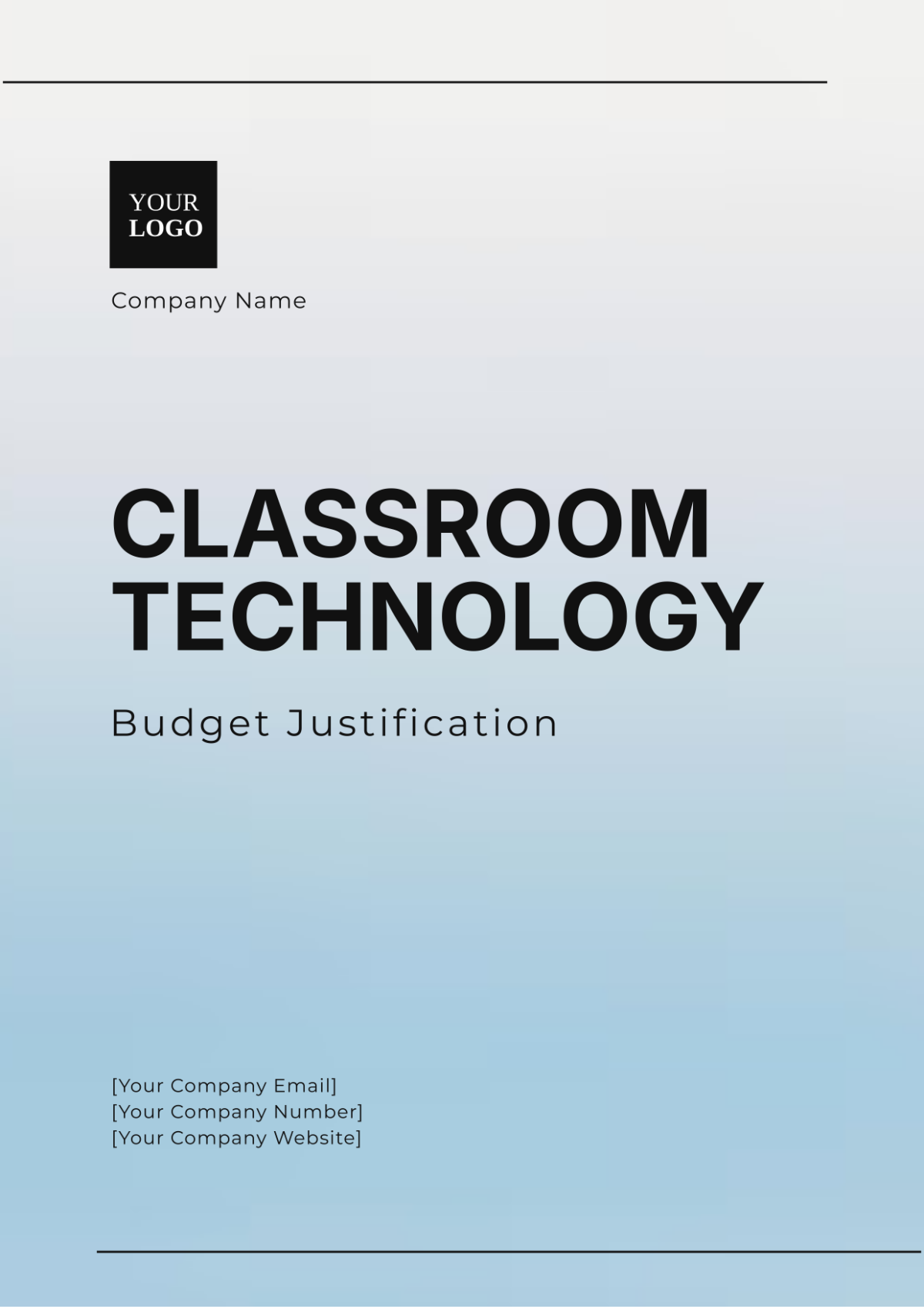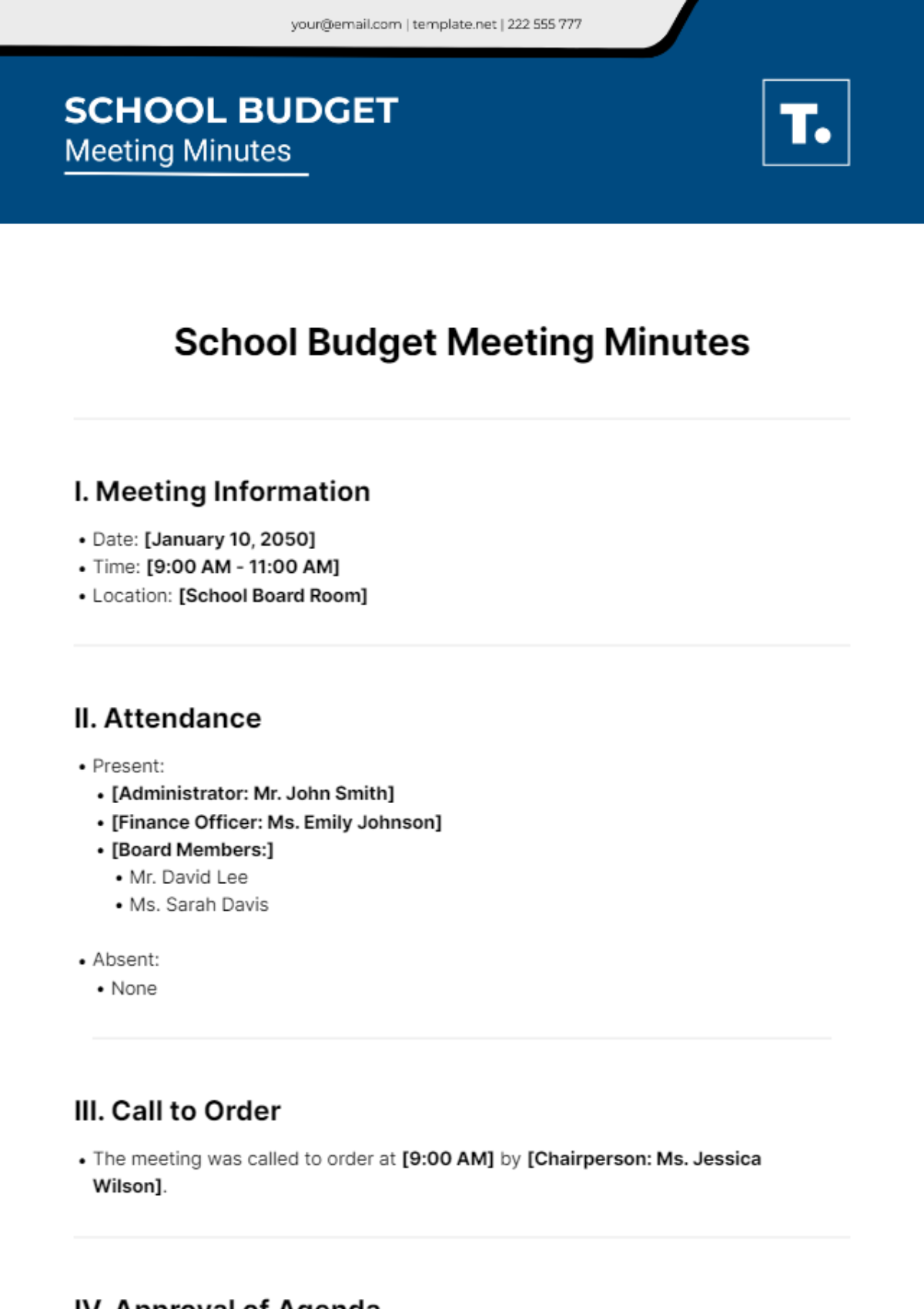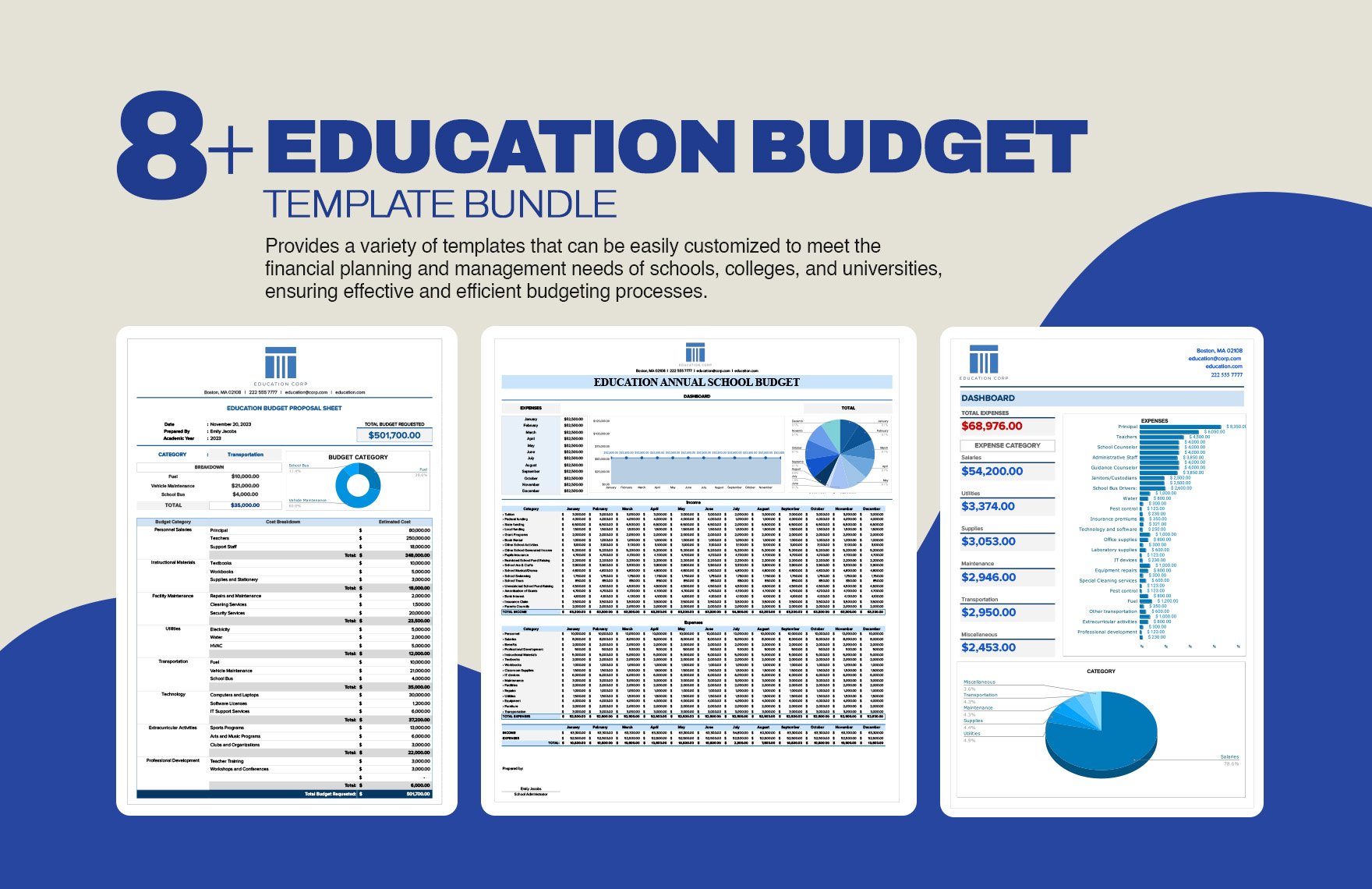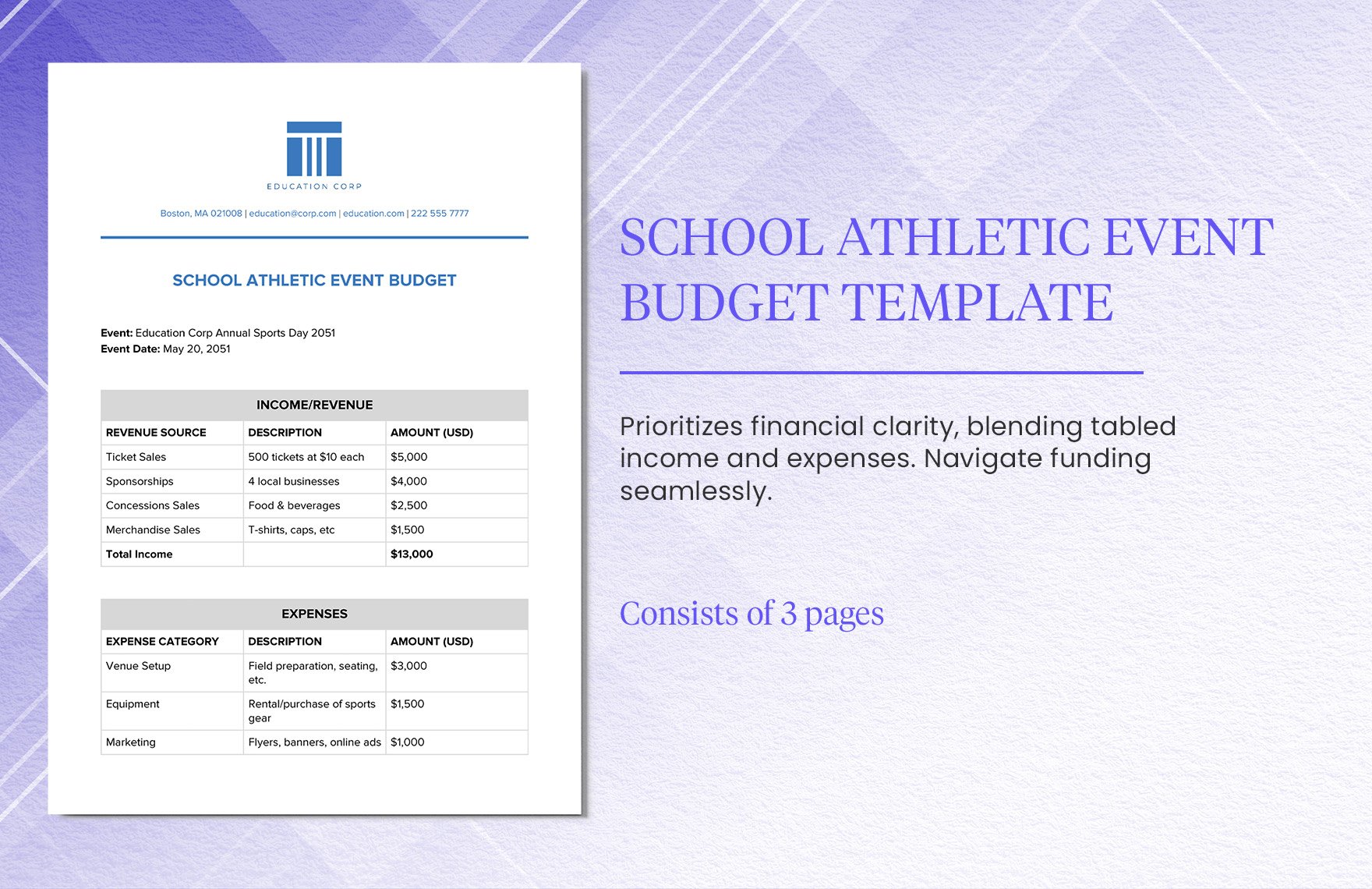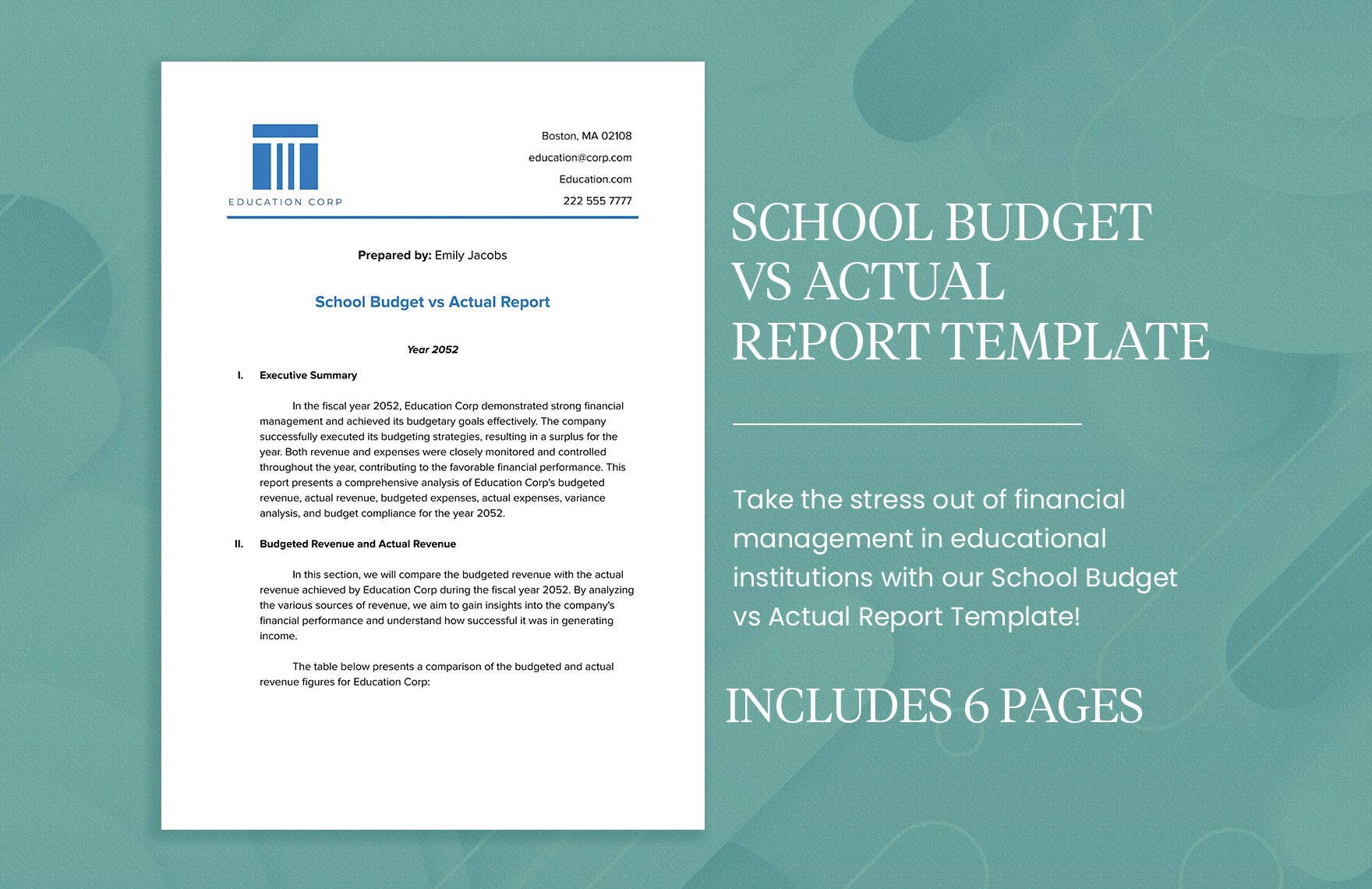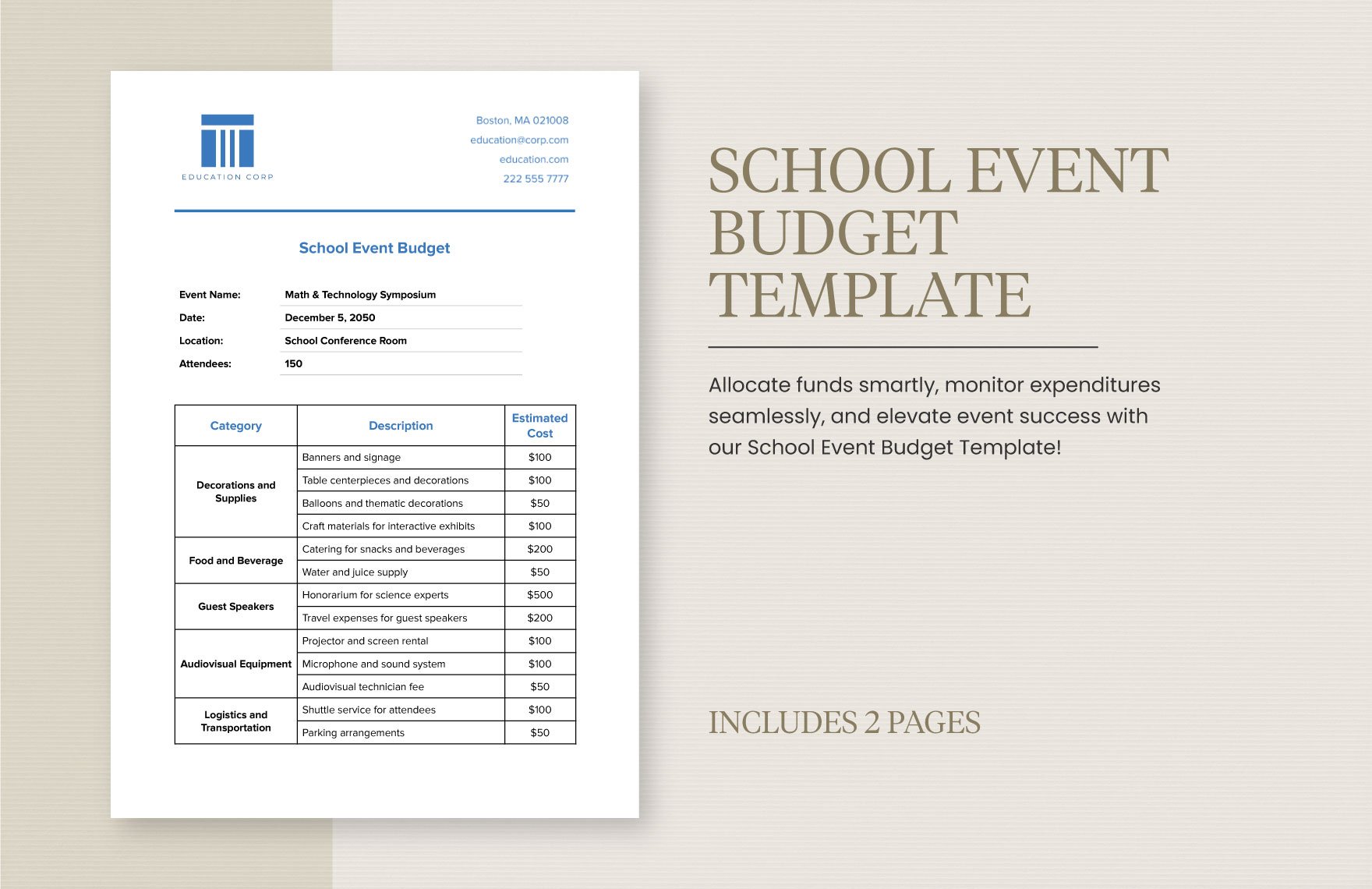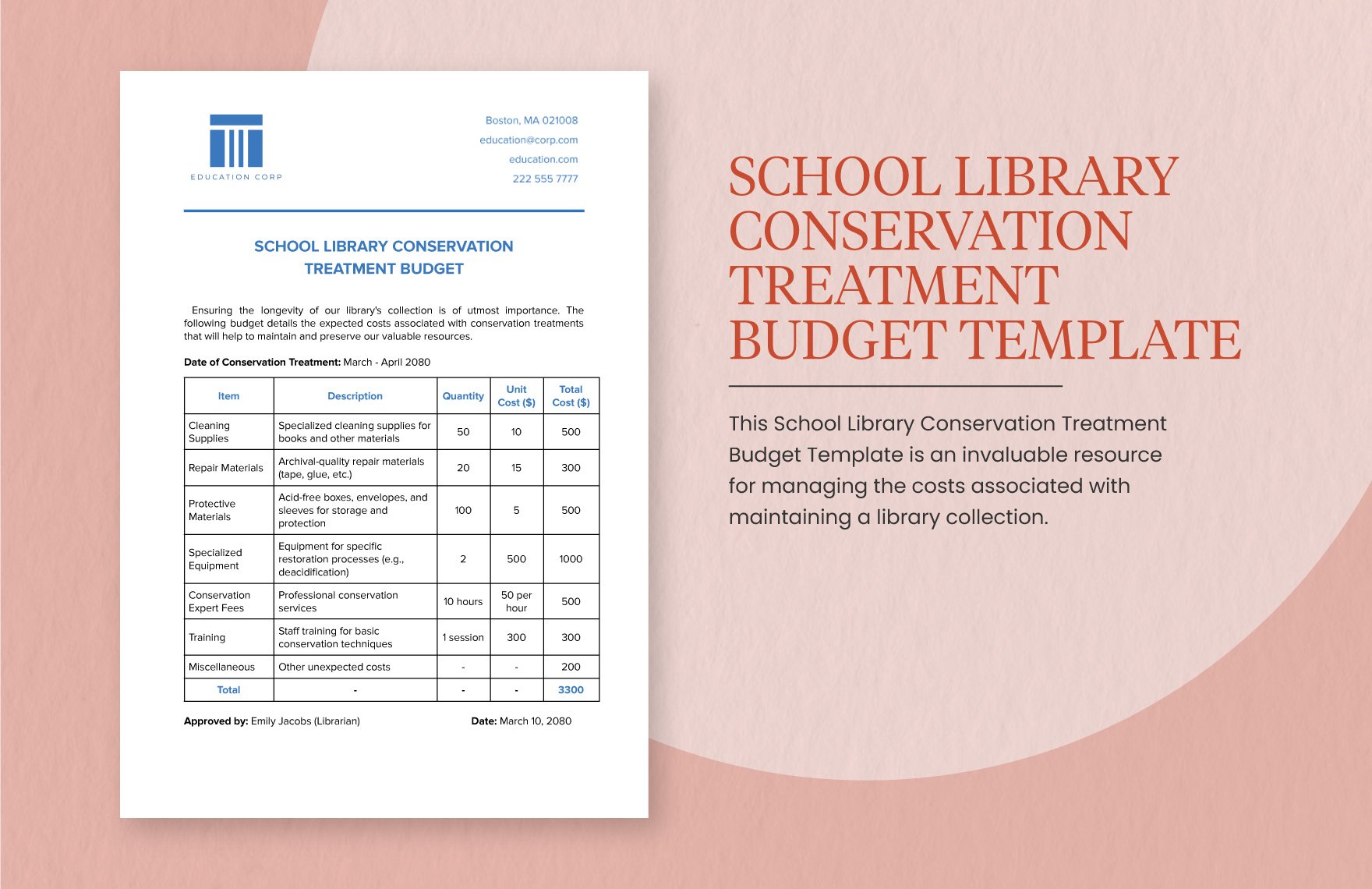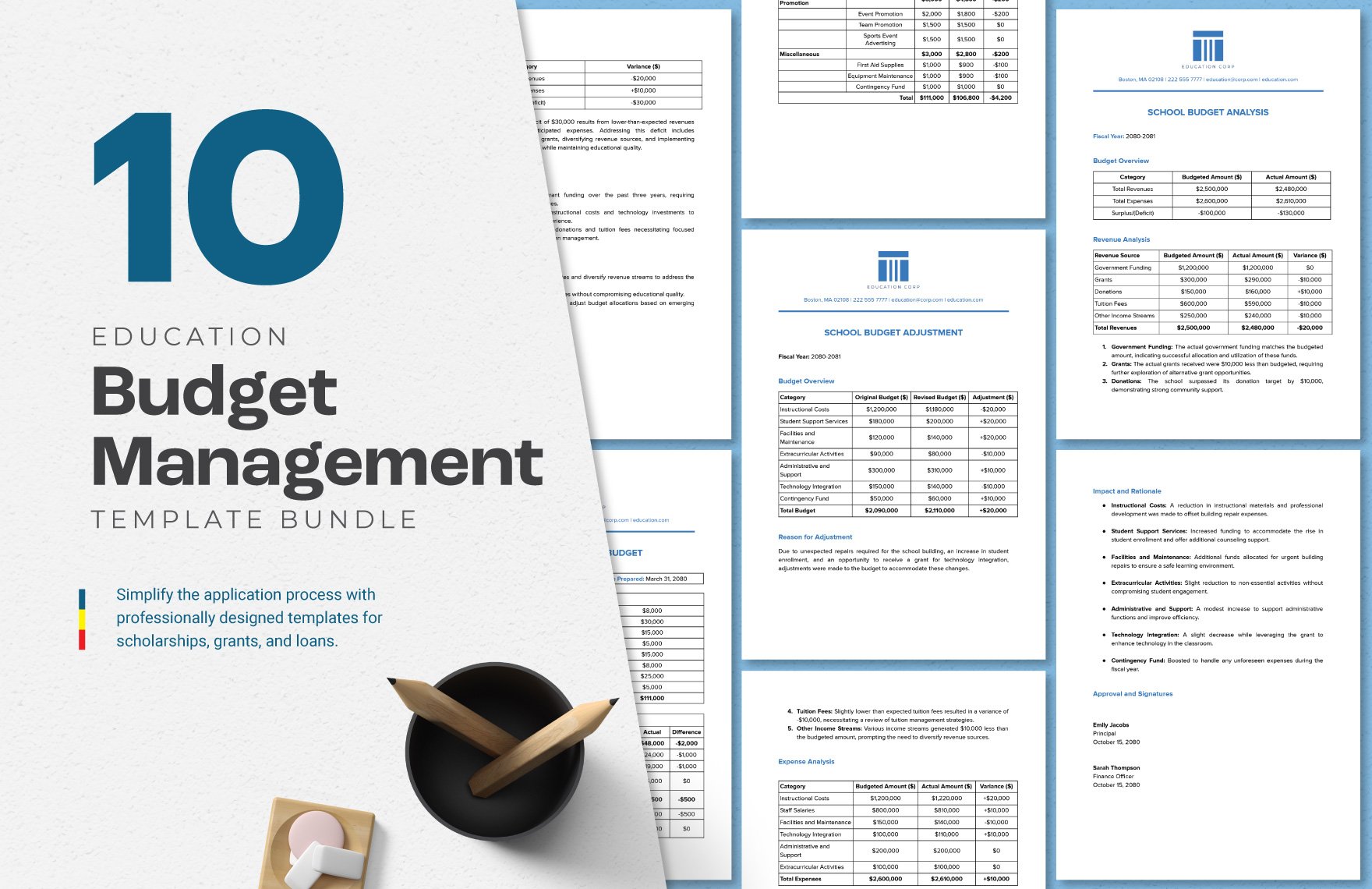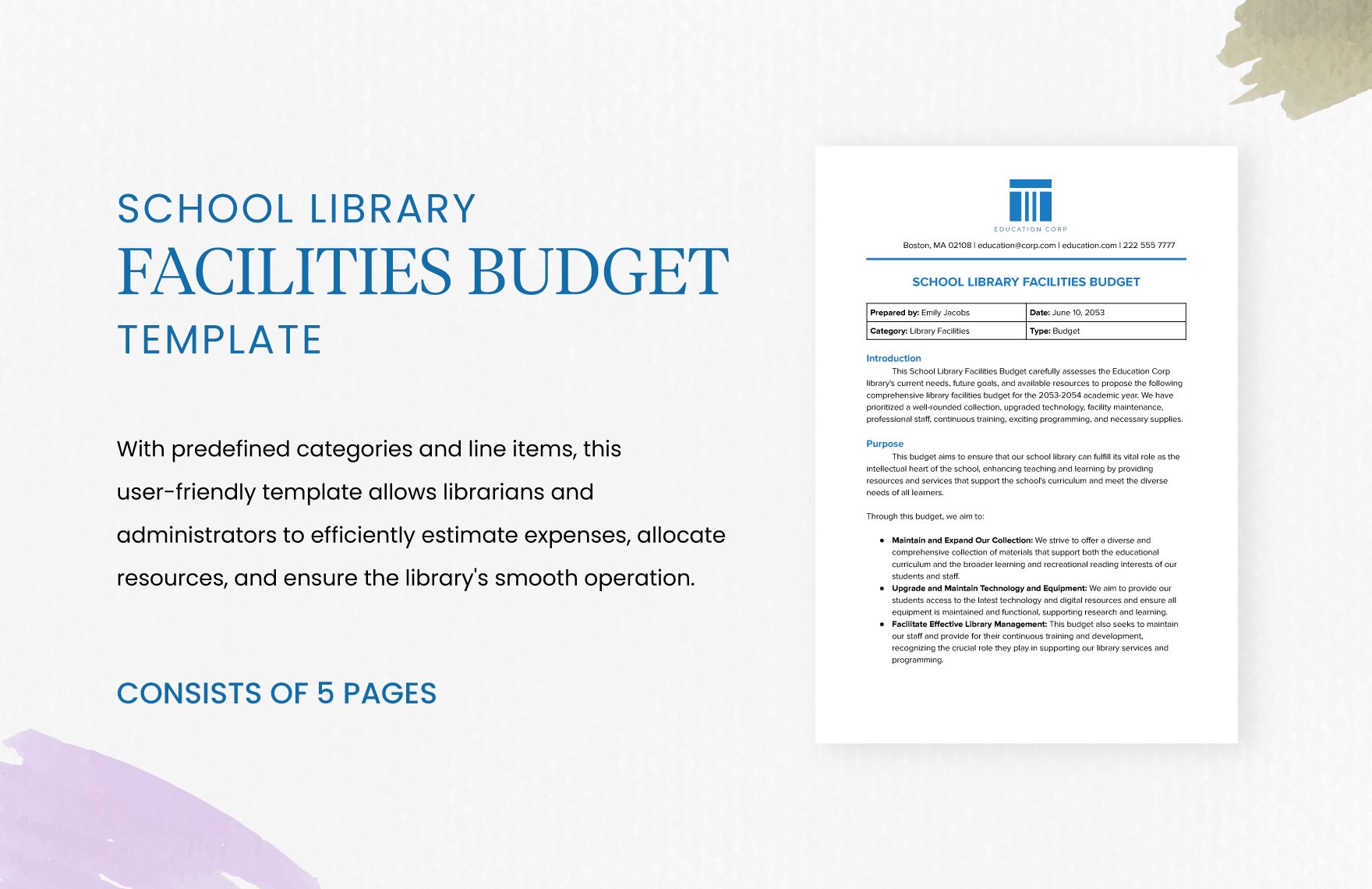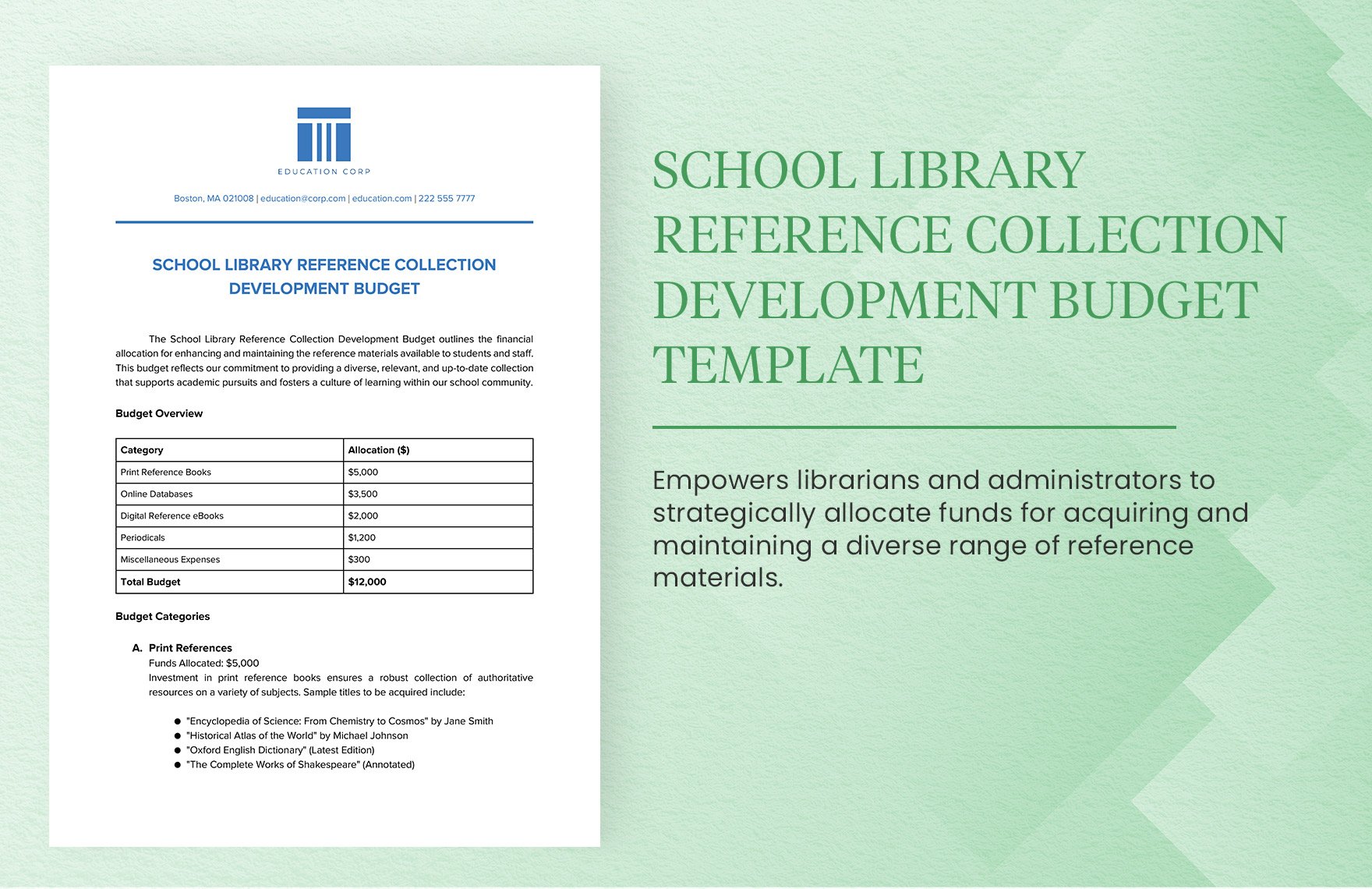Make Your Budgeting Process Seamless with School Budget Templates from Template.net
Bring your financial planning to life with School Budget Templates from Template.net. Designed for educational administrators and school finance officers, these templates help streamline your budgeting process, keep your finances organized, and maintain transparency. Use them to effectively allocate funds for student activities or plan the annual operating budget, ensuring that no detail is overlooked. Our templates come with sections for time frames, detailed line items, and contact information, enabling a comprehensive view of your budget. There’s no need for advanced technical skills – each professionally designed template is easy to use and modify, and best of all, they're free. Whether you’re preparing printouts for a board meeting or distributing digital budgets to stakeholders, these templates offer customizable layouts for any platform.
Discover the many School Budget Templates we have on hand to simplify your financial planning. Start by selecting the perfect template from our extensive library, then swap in your own data, tweak colors and fonts to match your school's branding. Enhance your document with advanced touches like dragging and dropping educational icons or adding insightful charts. With our AI-powered text tools, crafting detailed budget narratives is effortless. The possibilities are endless, allowing you to explore creativity without the need for specialized skills. Our library is regularly updated with new designs to keep your documents fresh and relevant. Once you’re finished, effortlessly download or share your budget via print, email, or a secure link, making it ideal for multiple channels and real-time collaboration with your team.
